Fractions, Decimals, Percents Worksheets
Comparing Fractions
Grades: 3rd Grade, 4th Grade
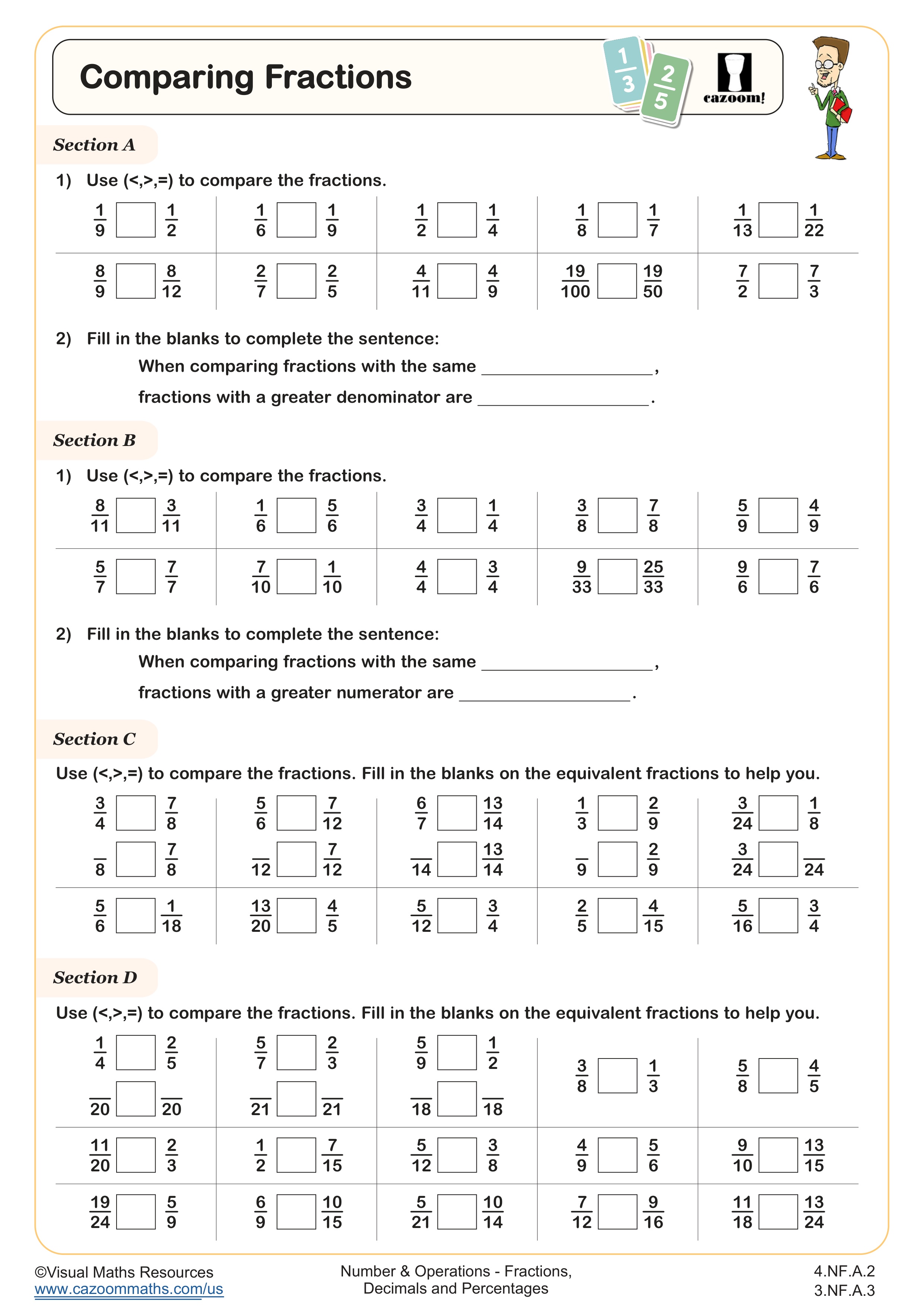
Finding fractions of a set of objects (A)
Grades: 3rd Grade
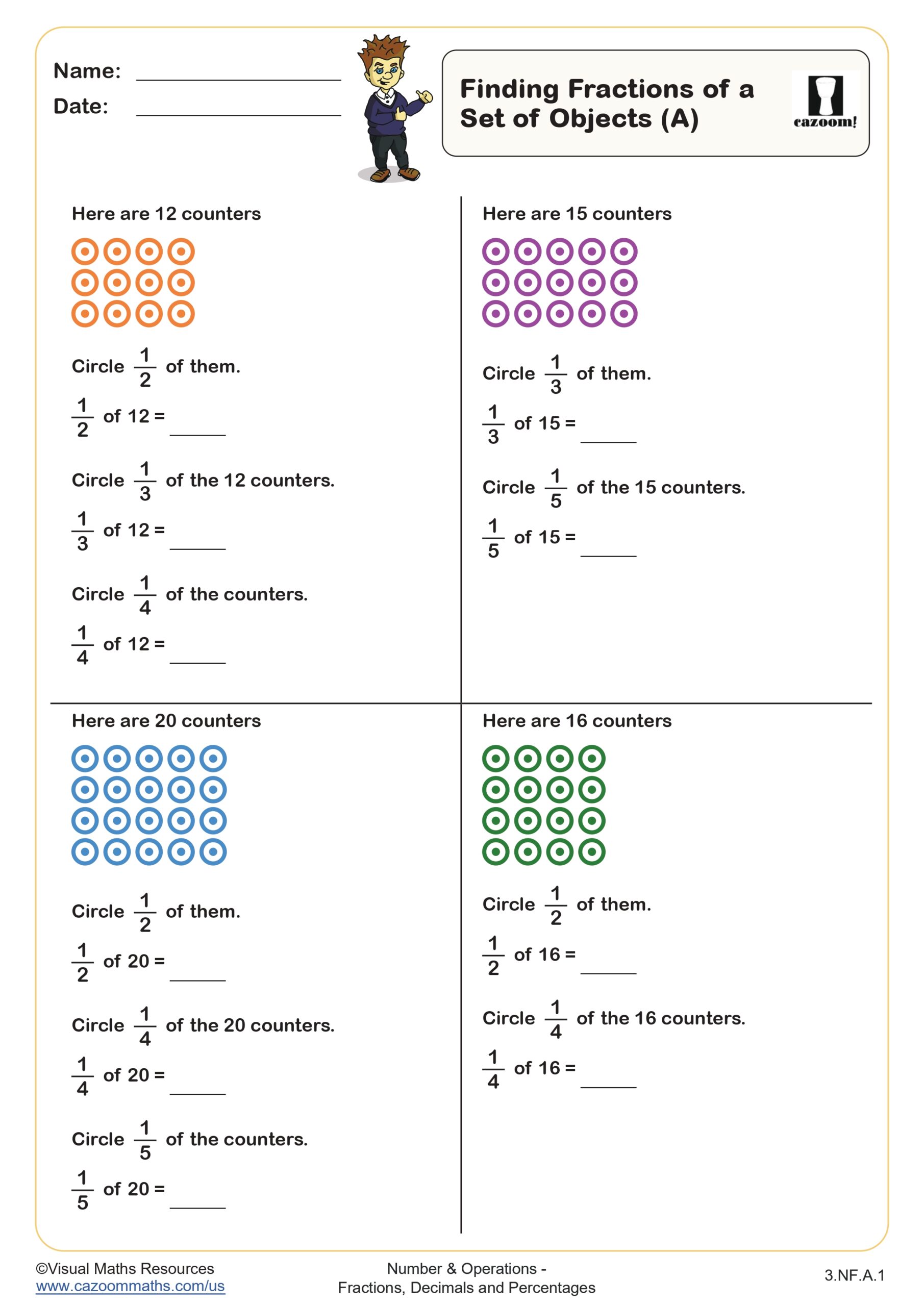
Finding fractions of a set of objects (B)
Grades: 3rd Grade
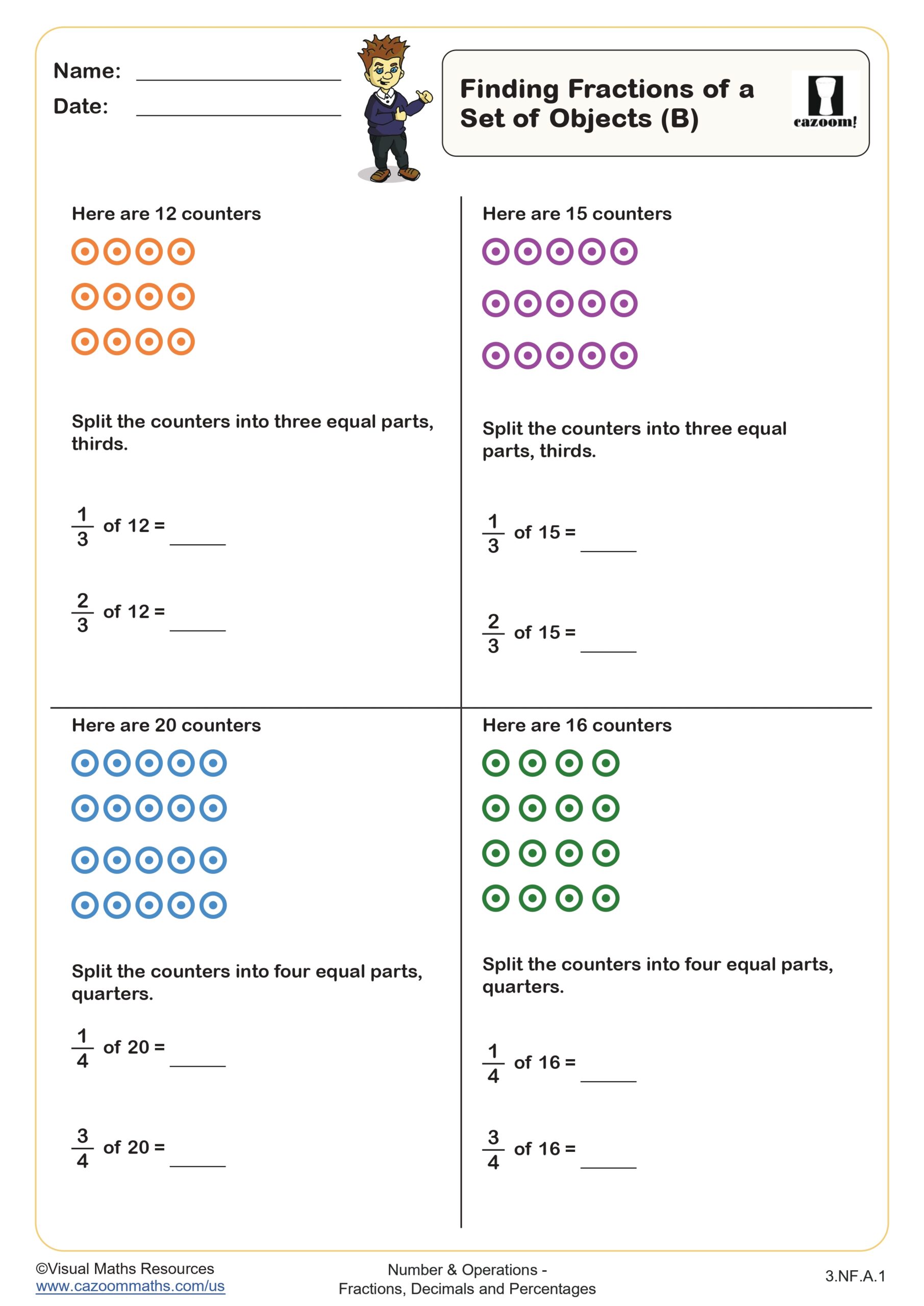
Finding fractions of a set of objects (C)
Grades: 3rd Grade
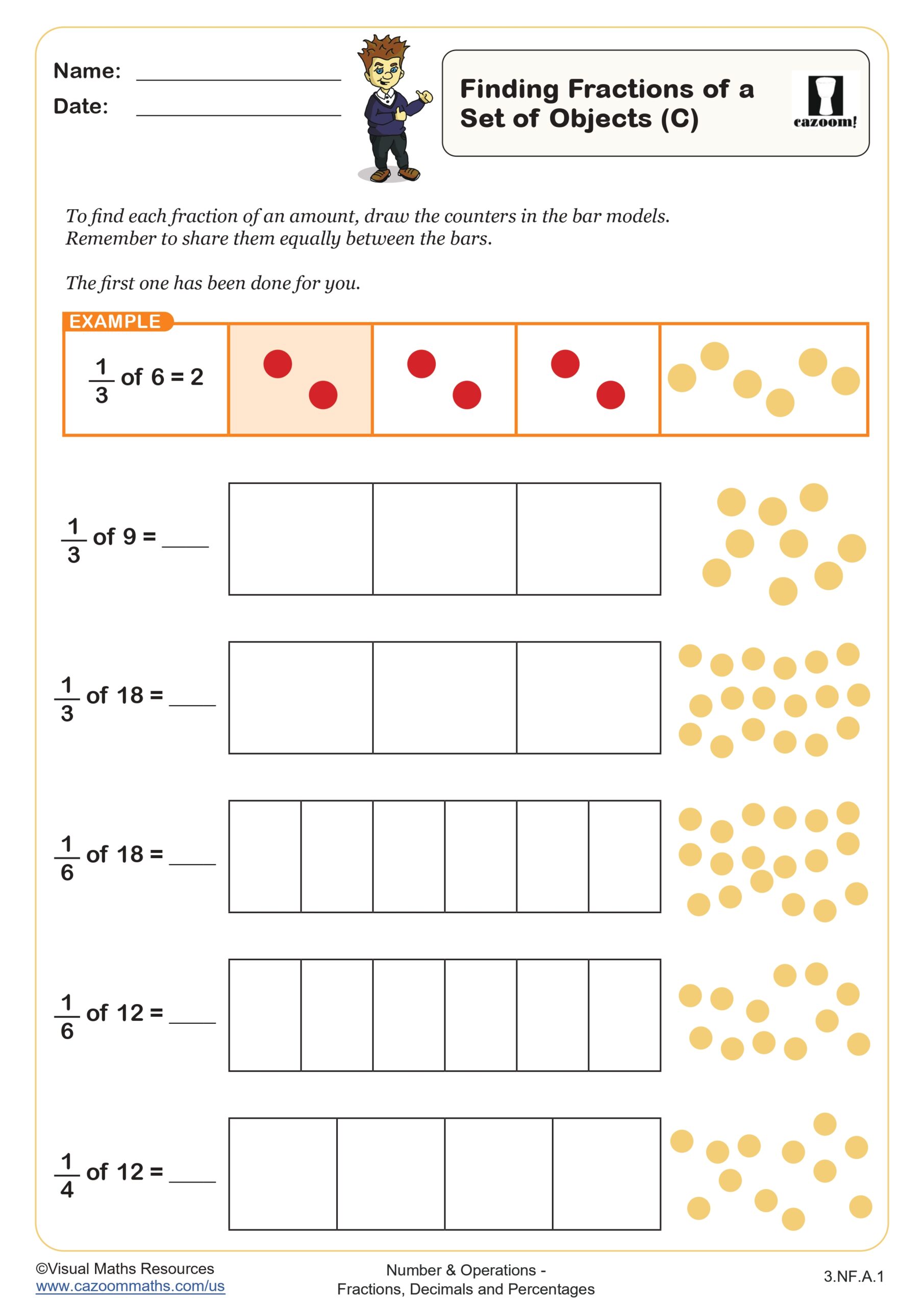
Finding fractions of a set of objects (D)
Grades: 3rd Grade
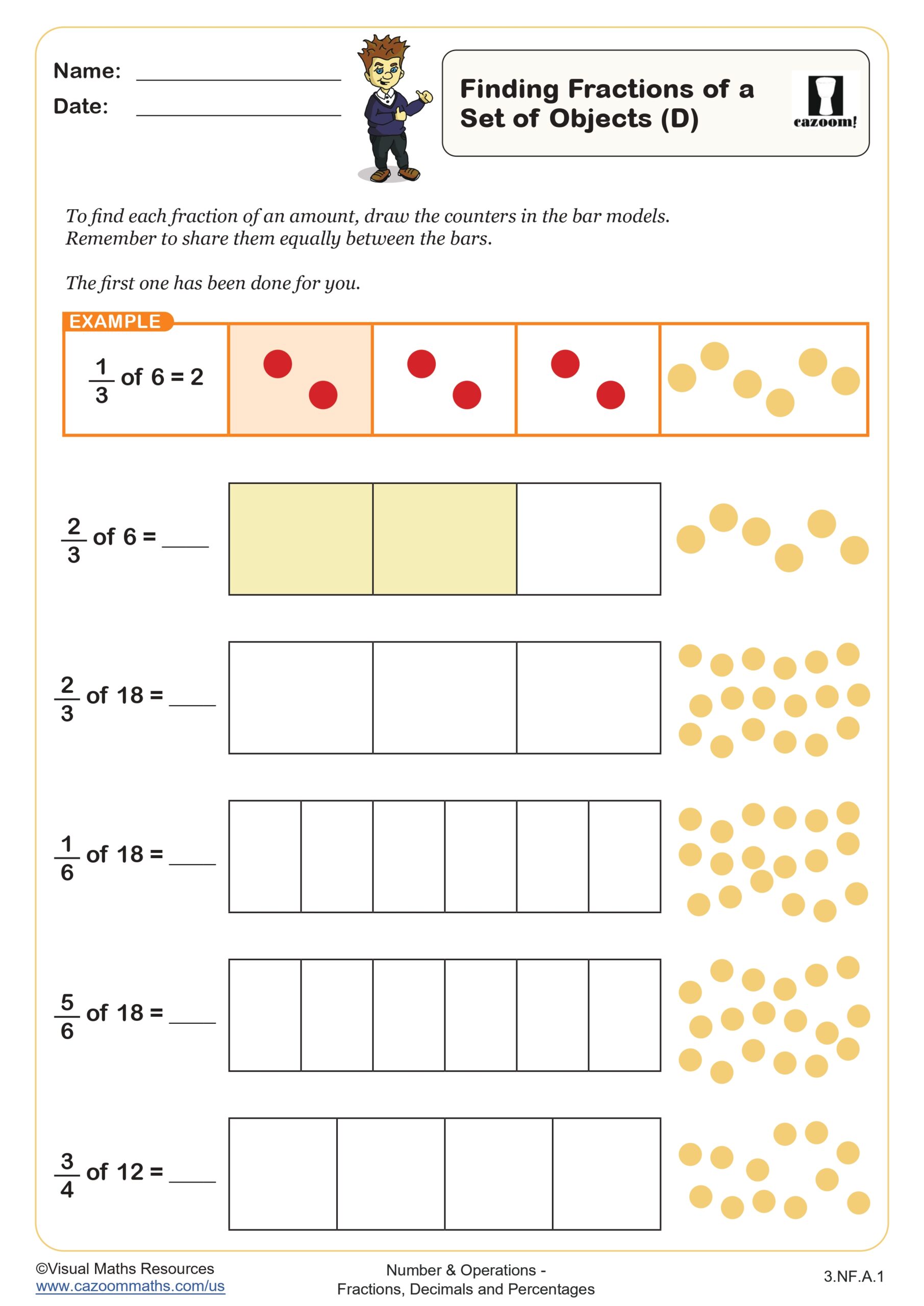
Fraction Equivalence - 1/2 and 2/4
Grades: 3rd Grade
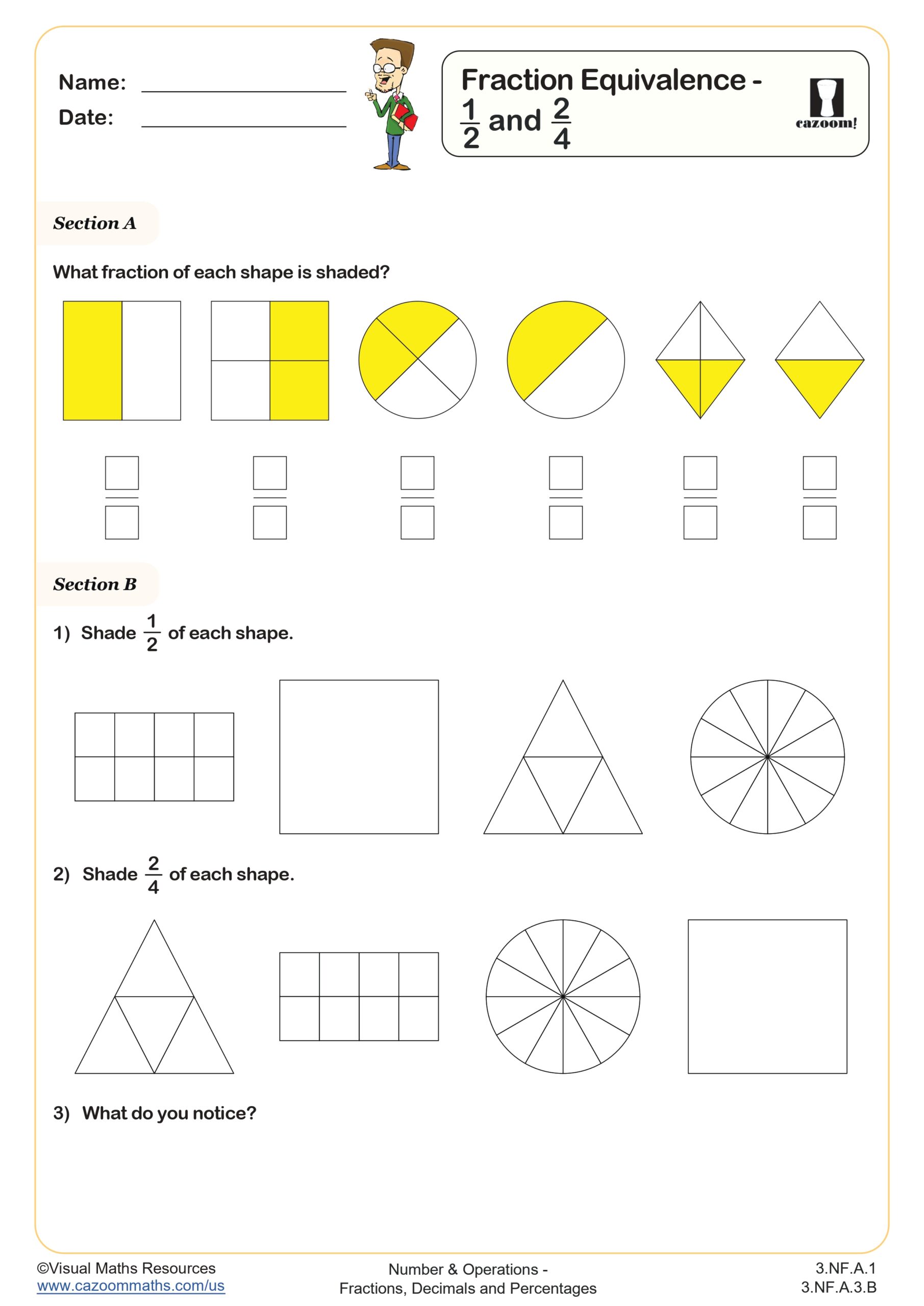
The Six Times Table
Grades: 3rd Grade
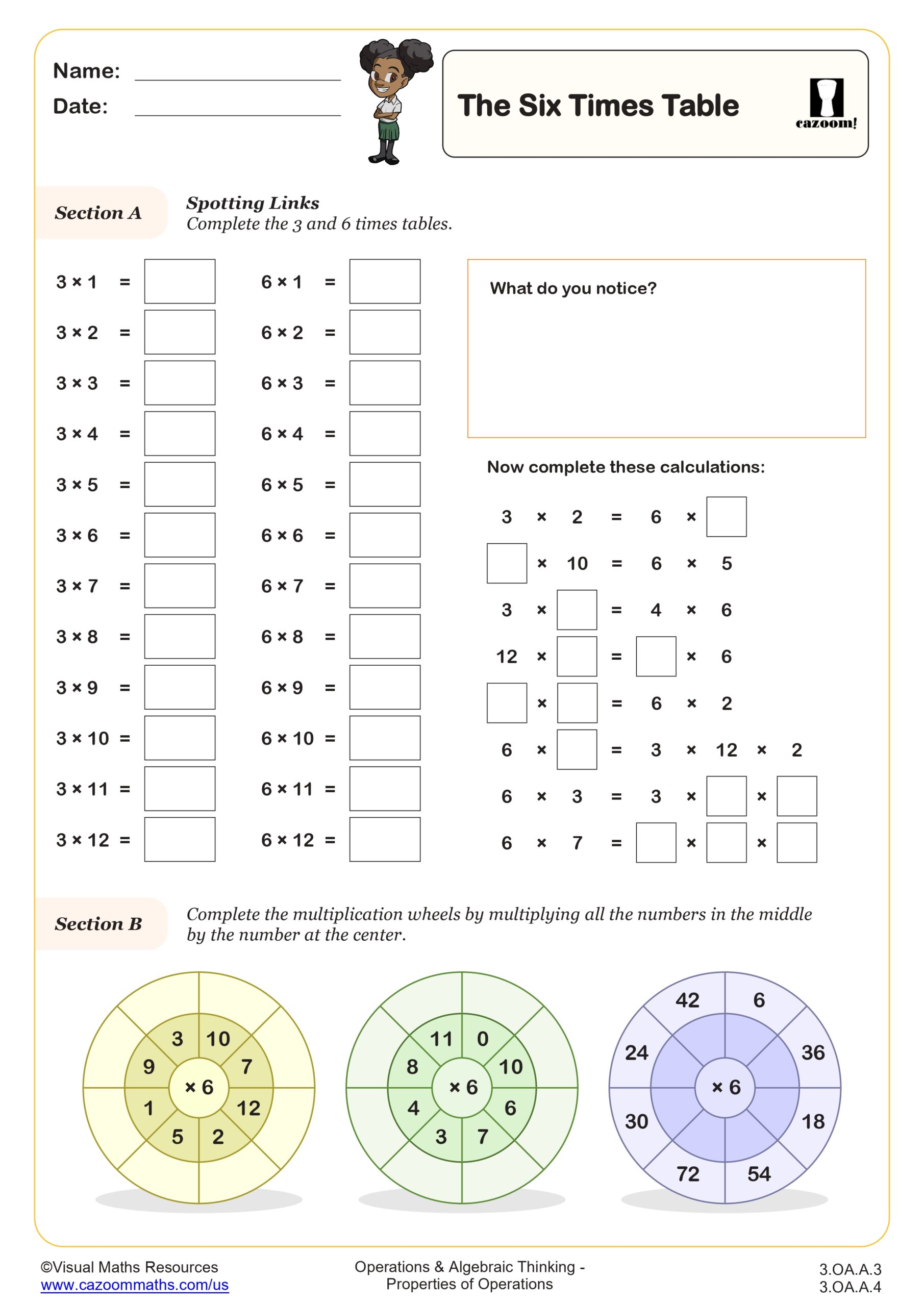
Add Mixed Numbers with the Same Denominator
Grades: 4th Grade, 5th Grade
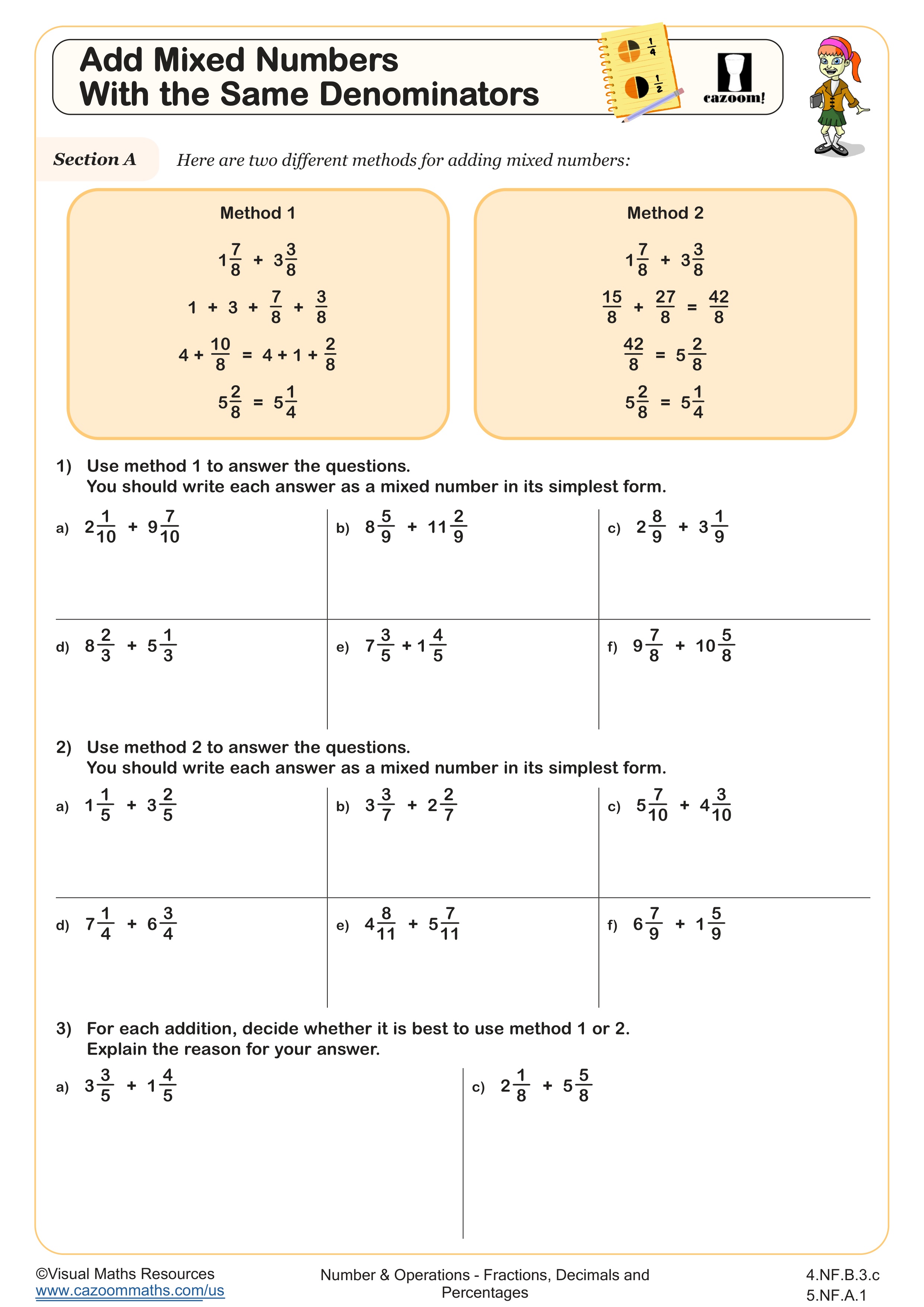
Decimals on a Number Line - Up to 1
Grades: 4th Grade
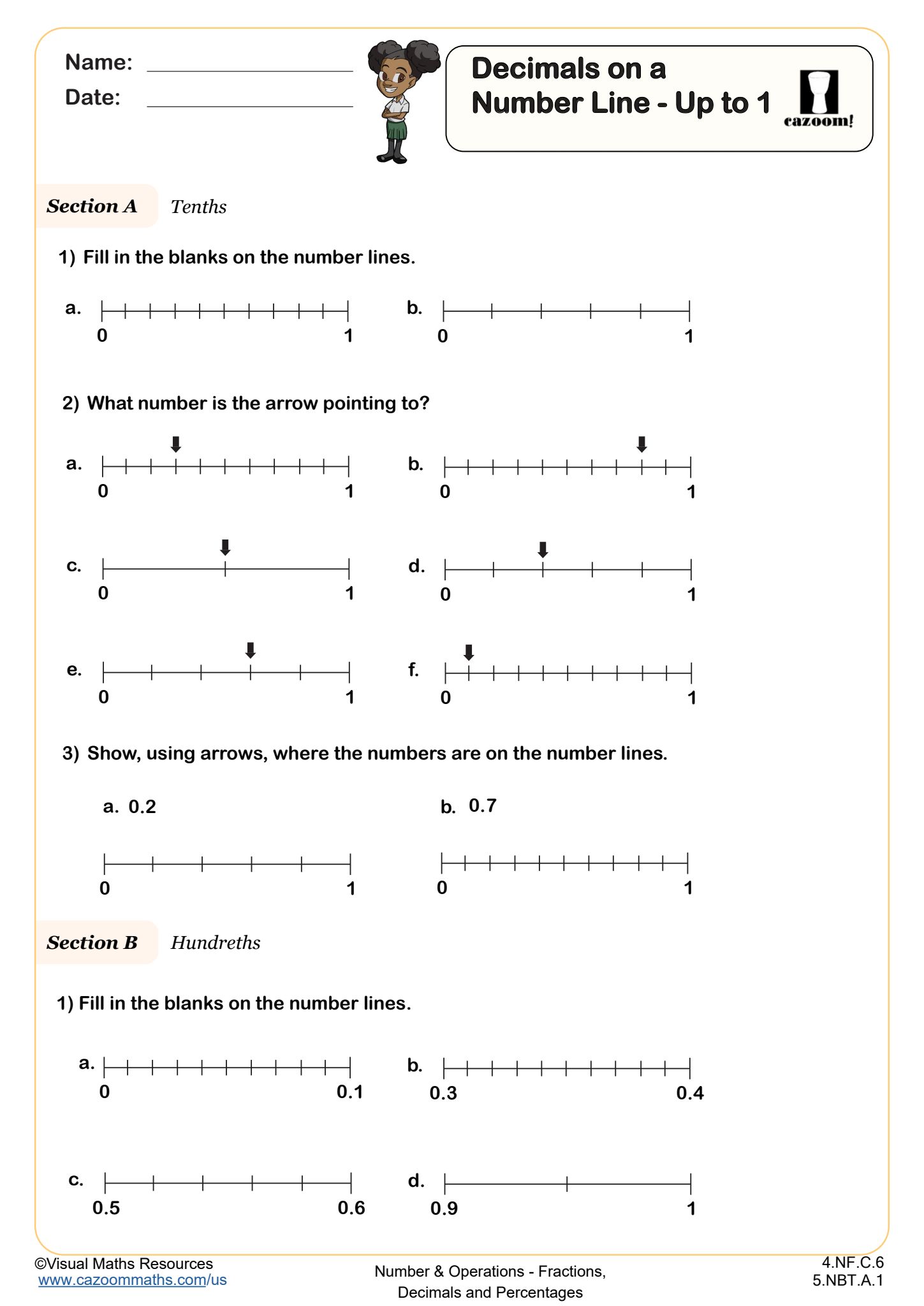
Solve Problems Involving Decimals
Grades: 4th Grade
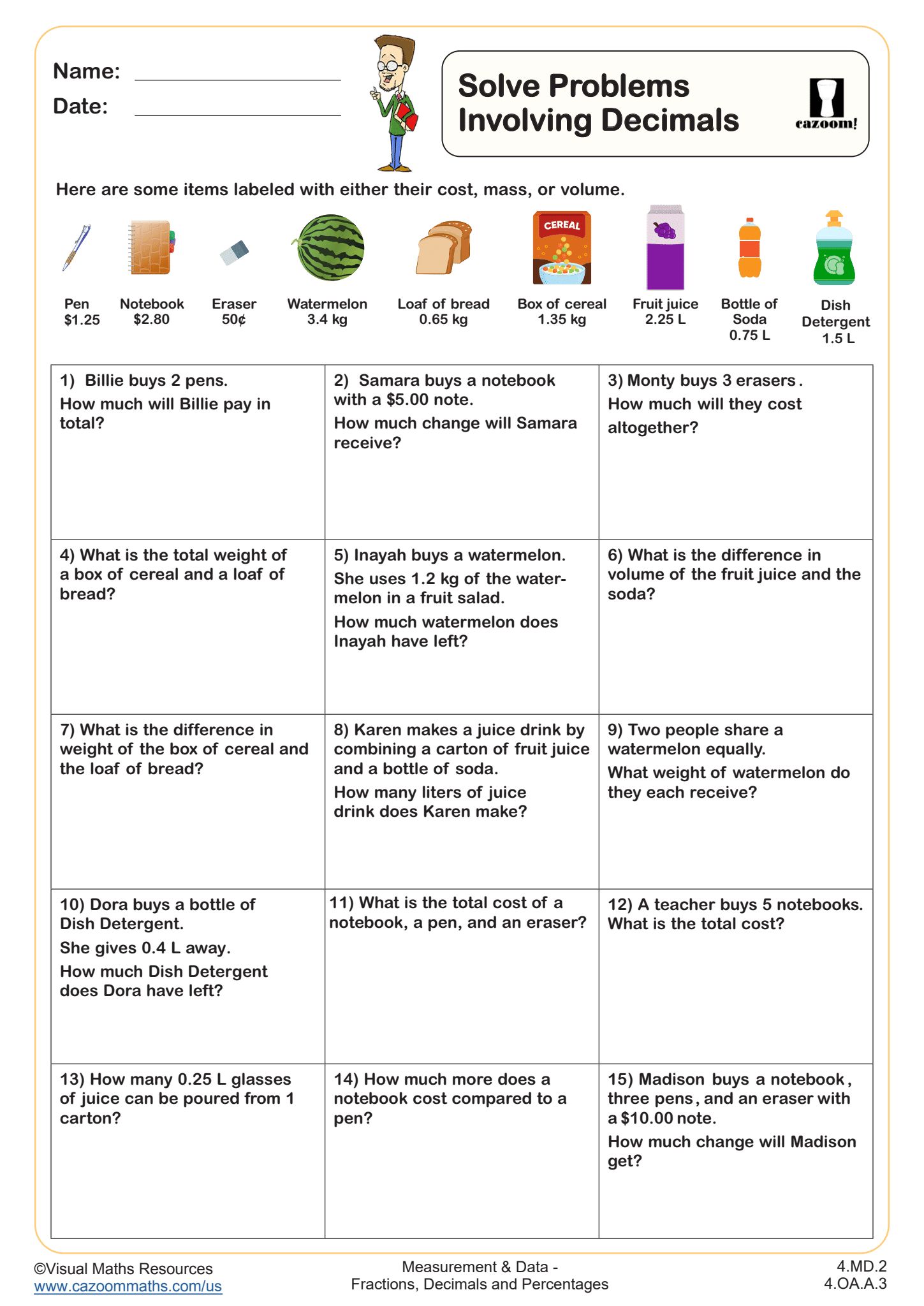
Adding and Subtracting Decimals
Grades: 5th Grade, 6th Grade
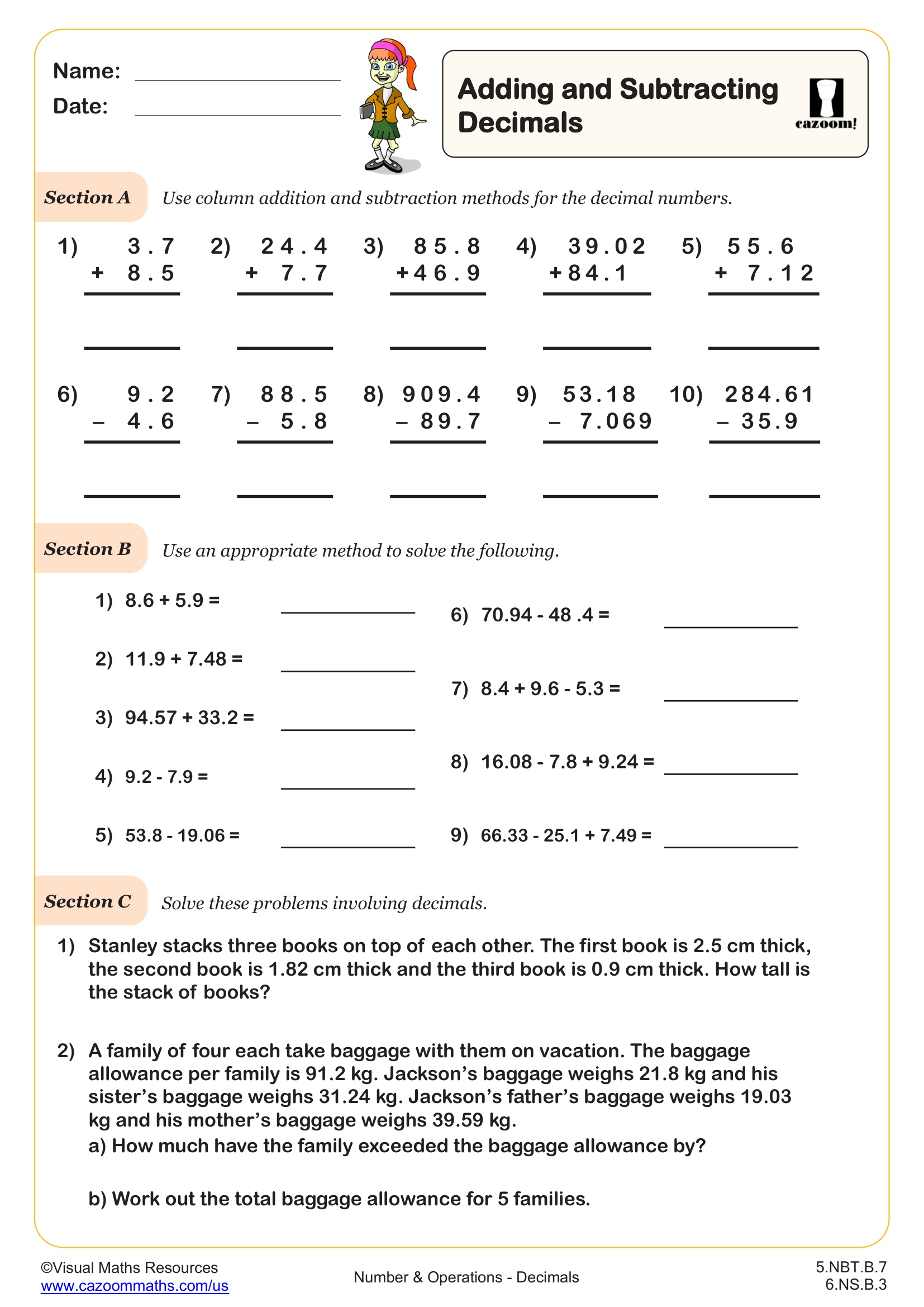
Comparing Decimals (A)
Grades: 5th Grade
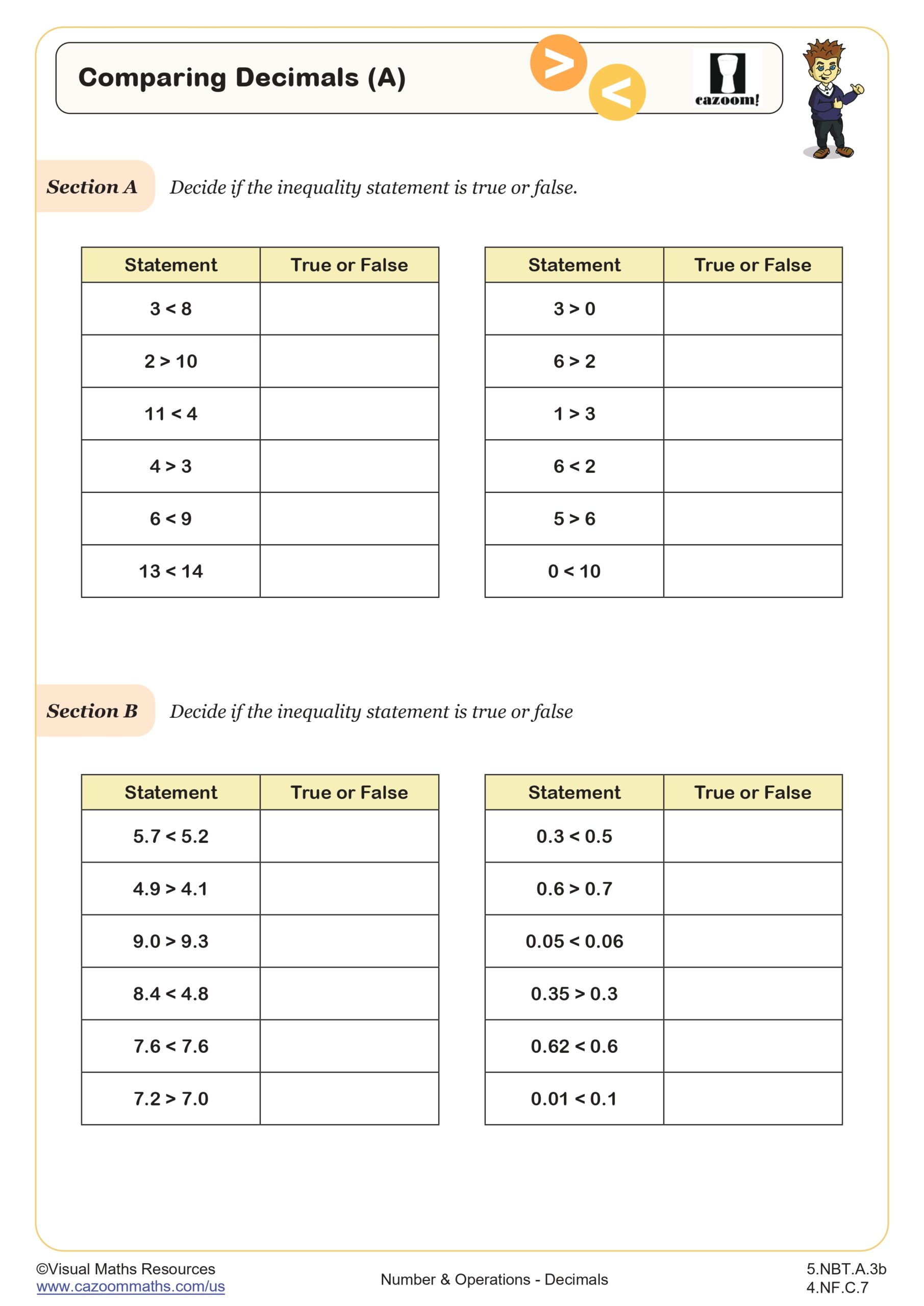
Decimal Place Value With Decomposition
Grades: 5th Grade
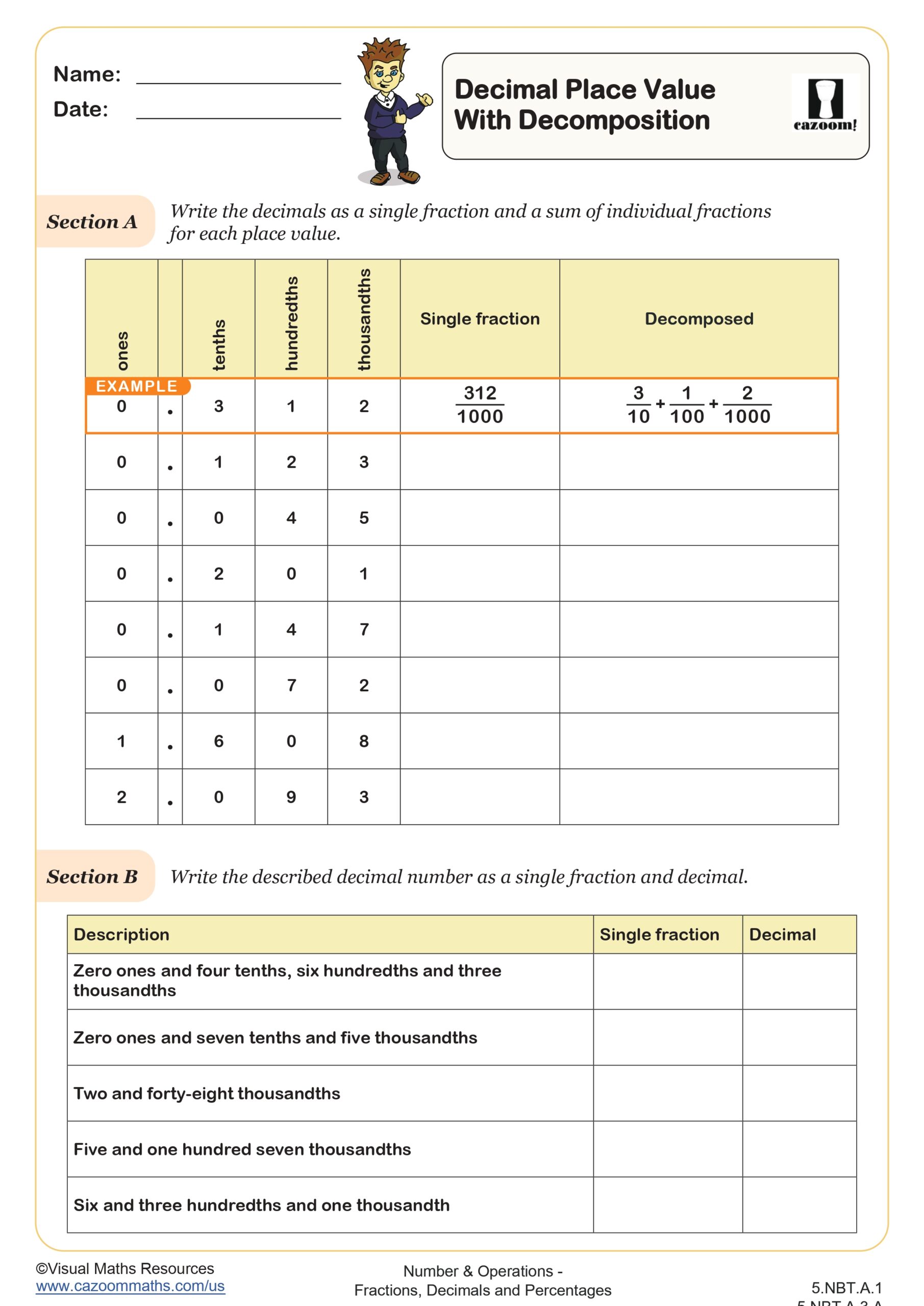
Decimal Sums to 1
Grades: 5th Grade
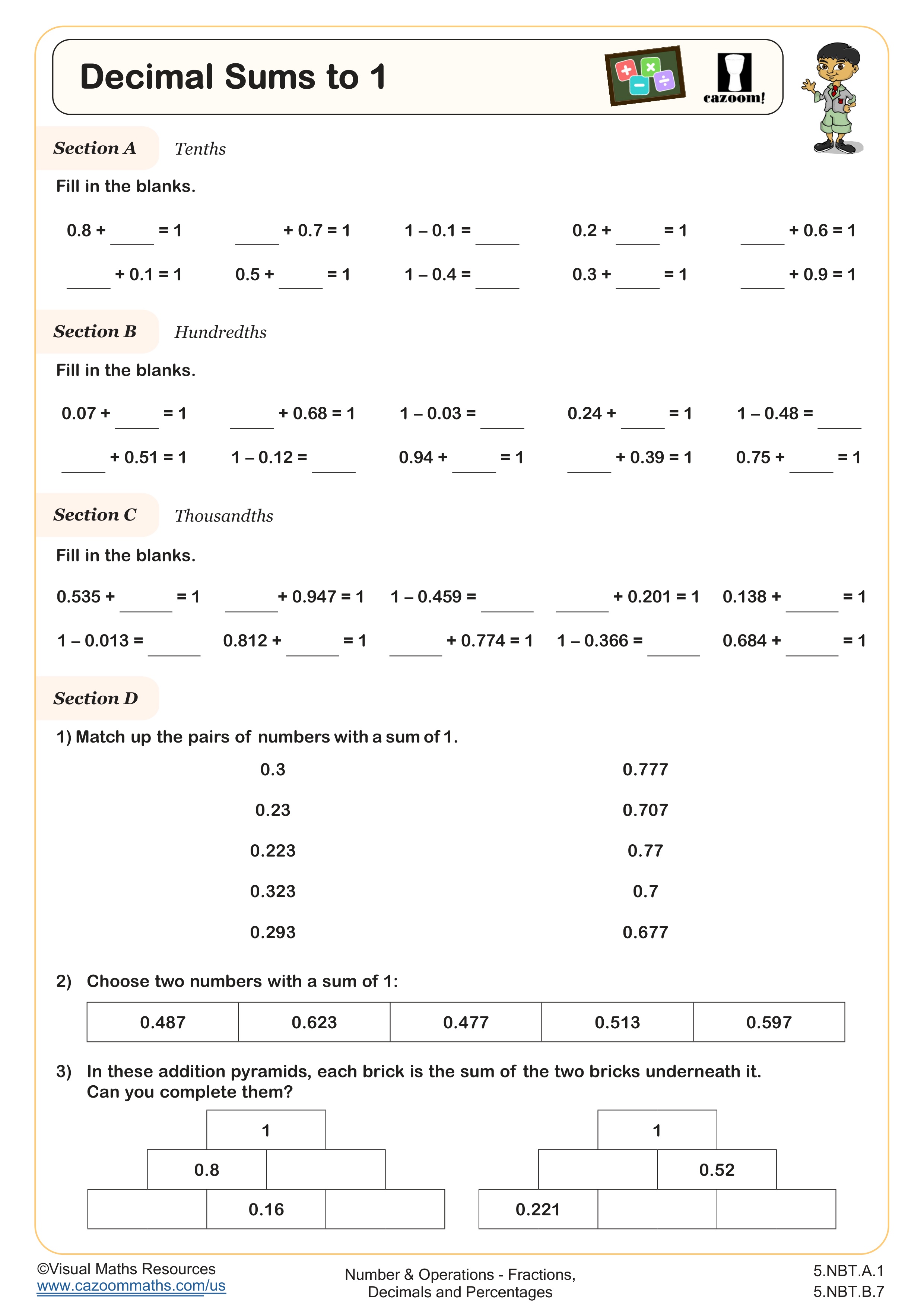
Decimals on a Number Line - Beyond 1
Grades: 5th Grade
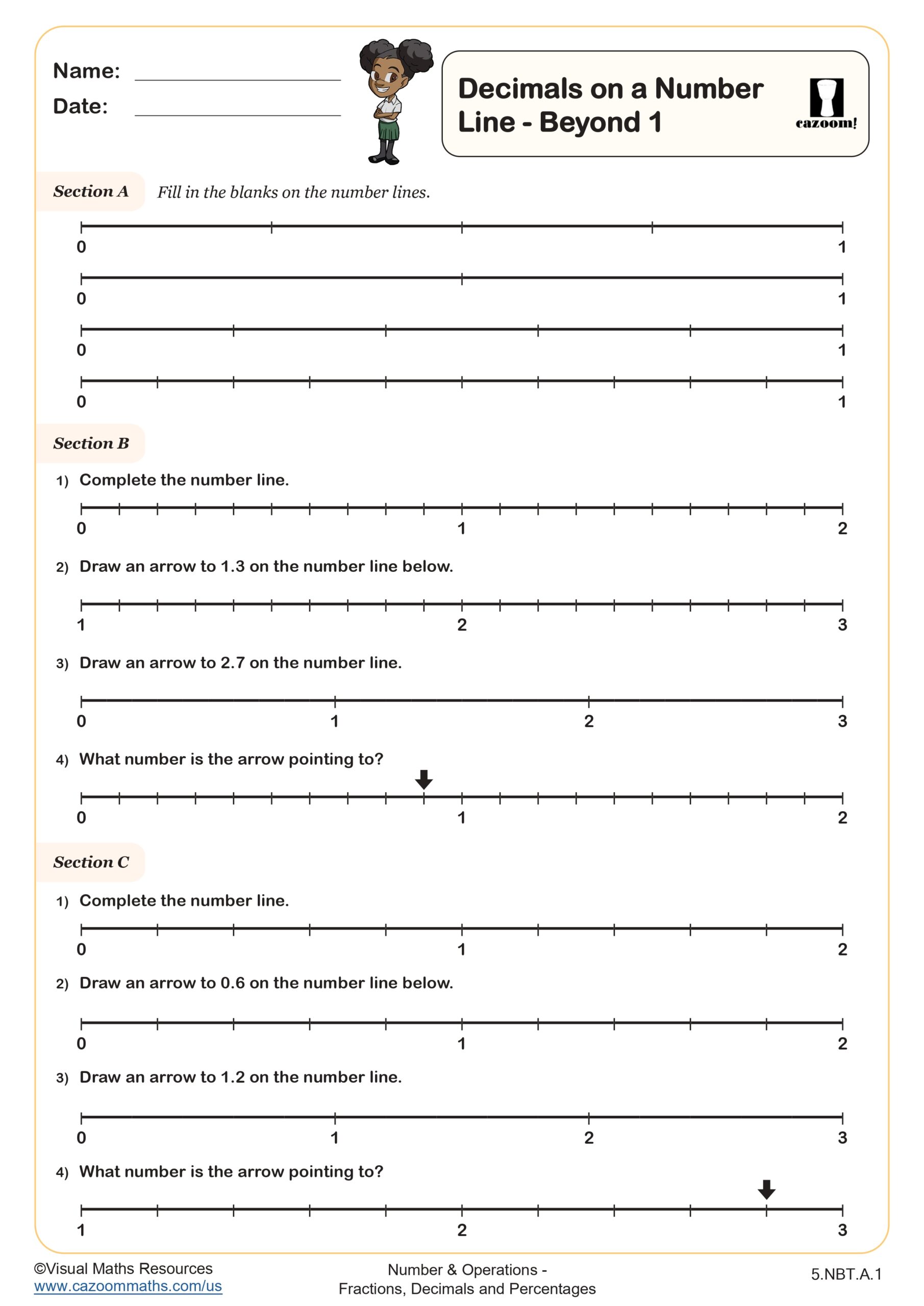
Dividing by Decimals
Grades: 5th Grade
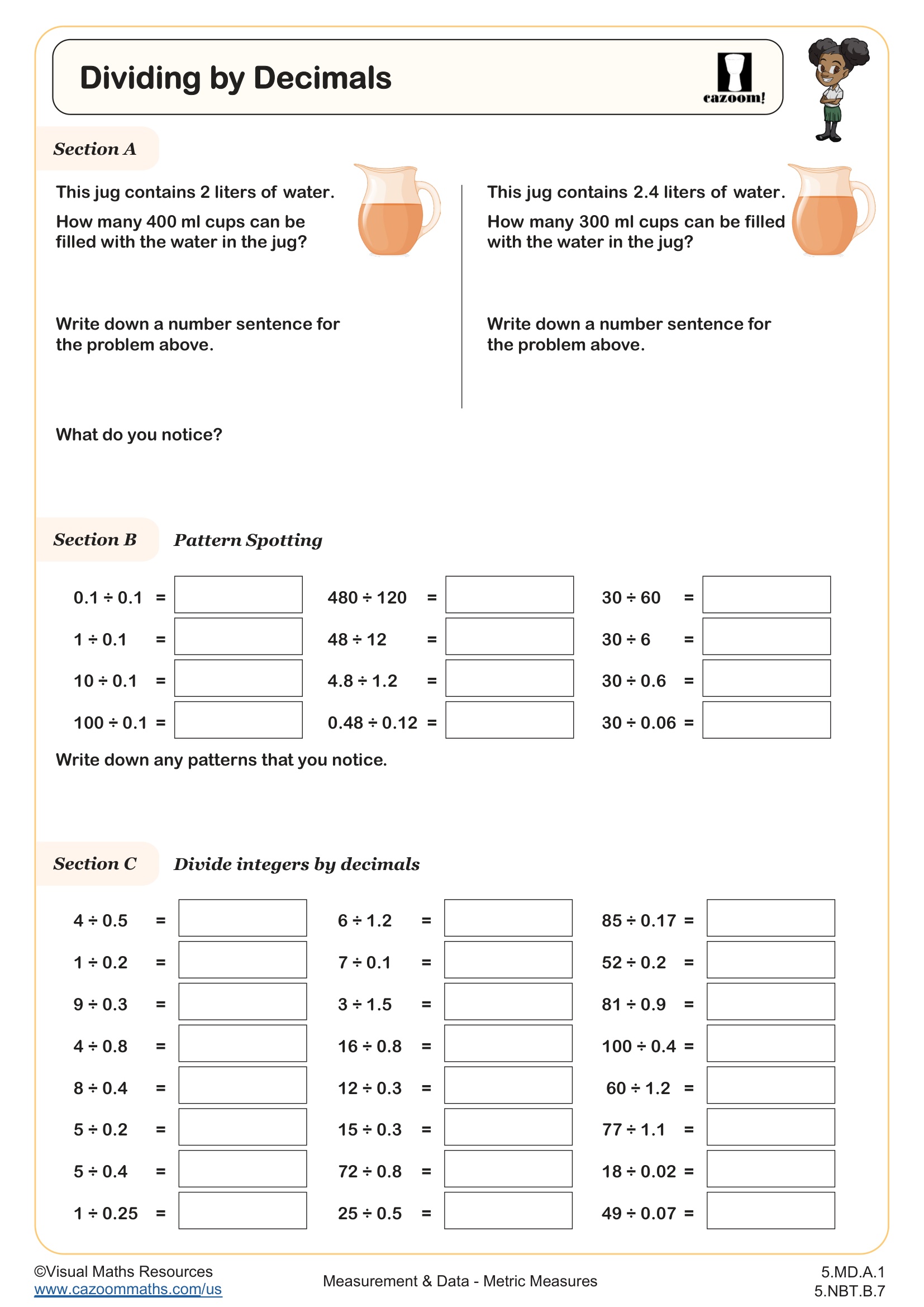
Estimating Shopping Bills
Grades: 5th Grade
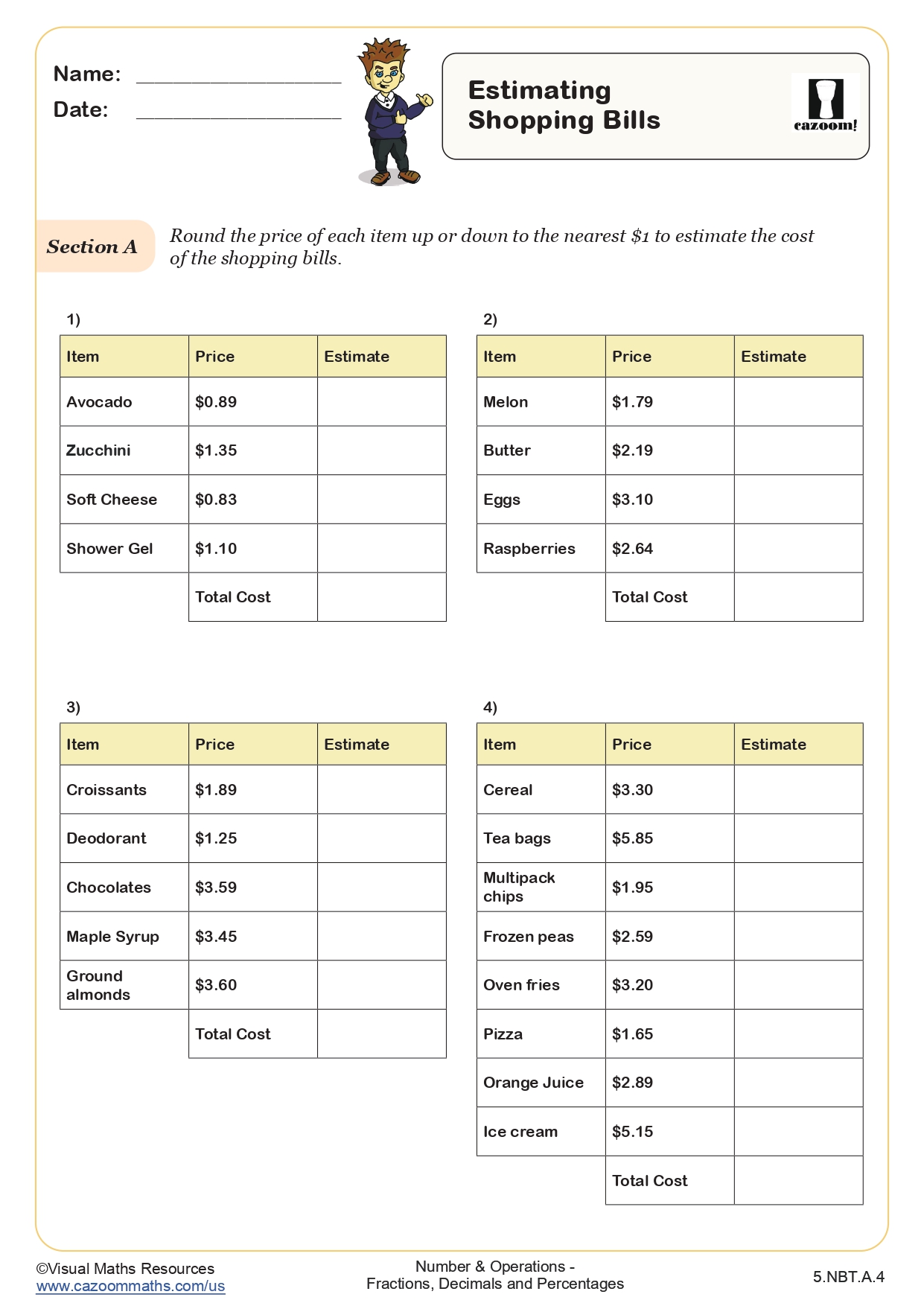
Finding Fractional Amounts
Grades: 5th Grade, 6th Grade
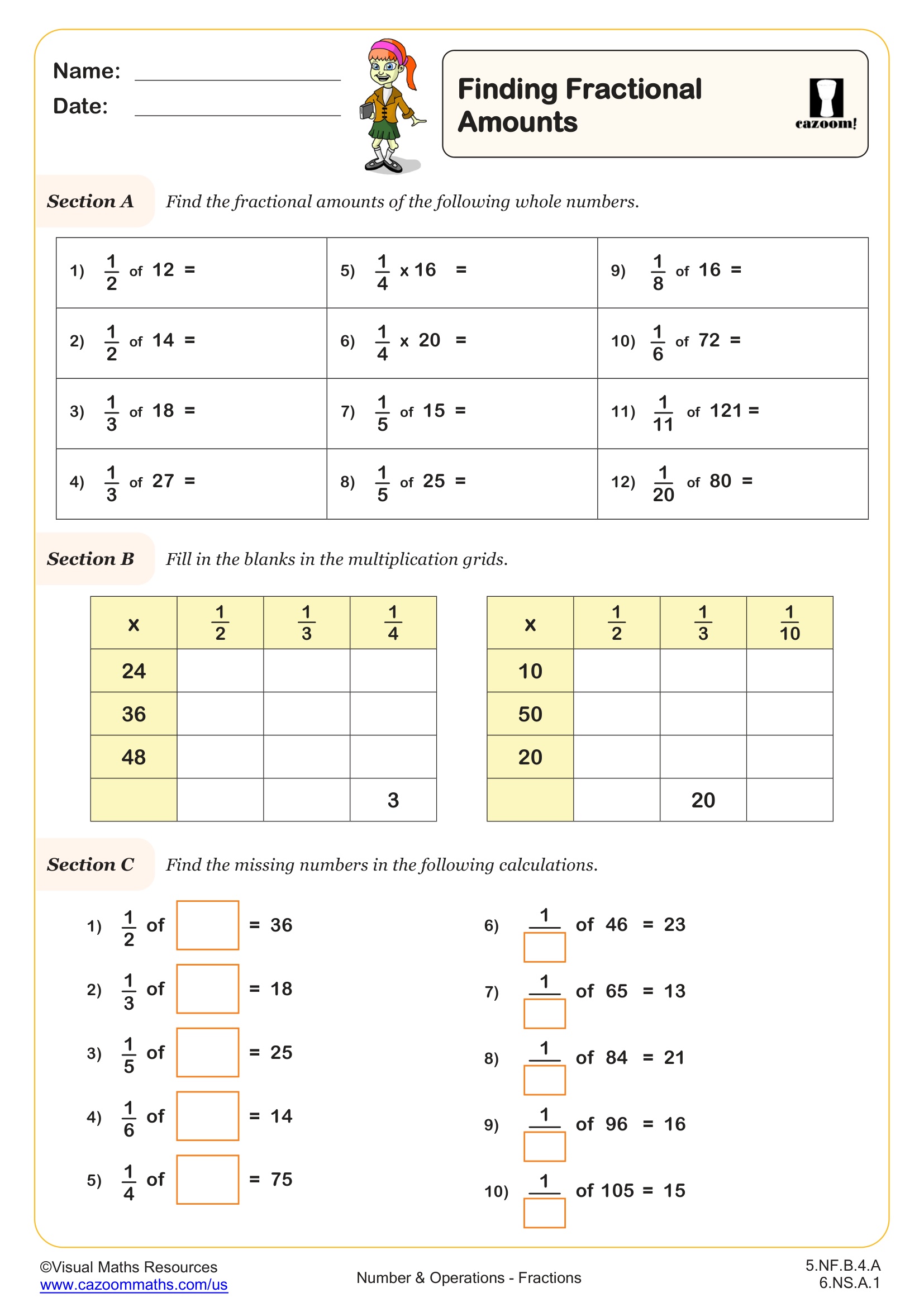
Finding Fractions of Amounts
Grades: 5th Grade, 6th Grade
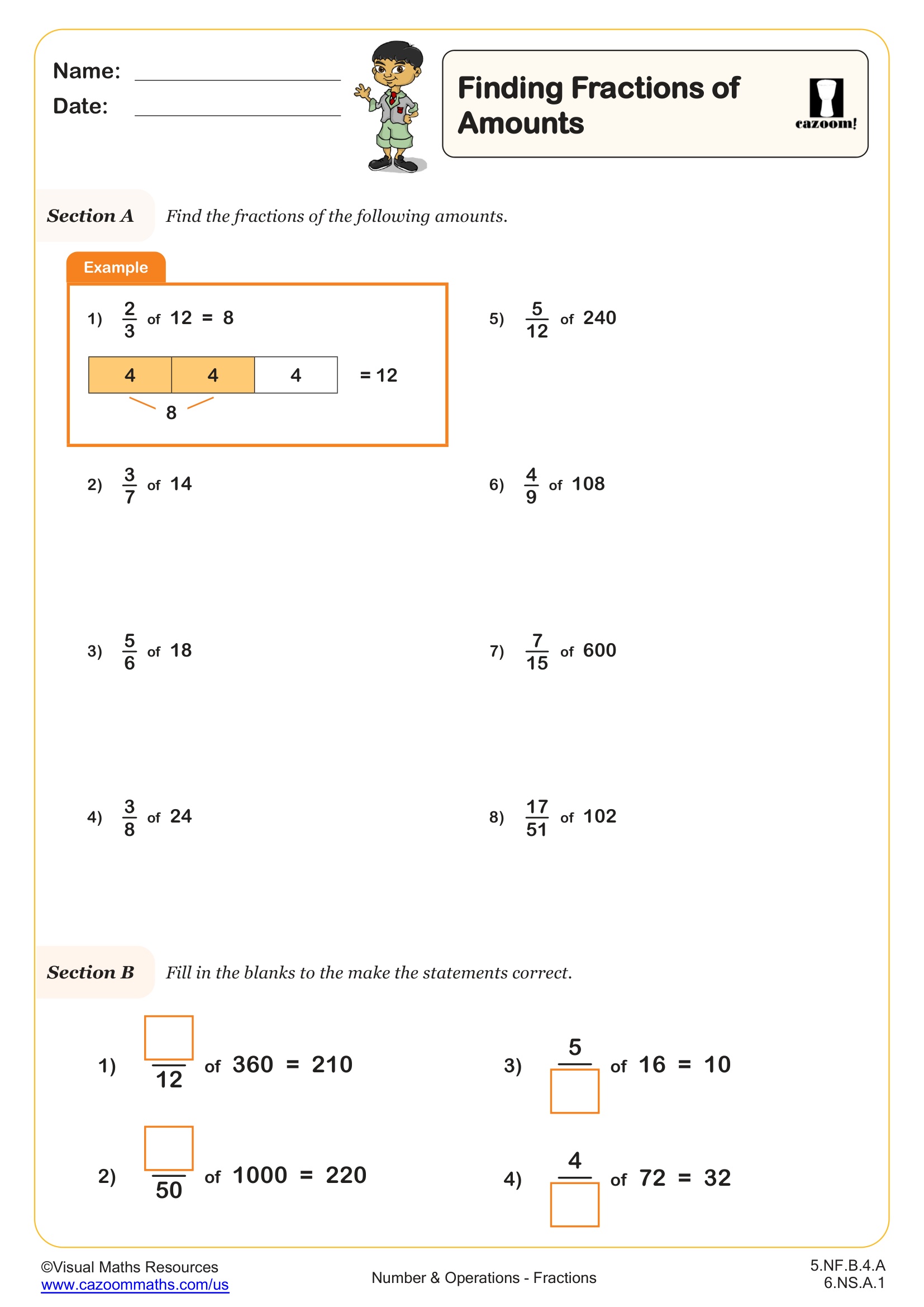
Fraction - Increase and Decrease
Grades: 5th Grade
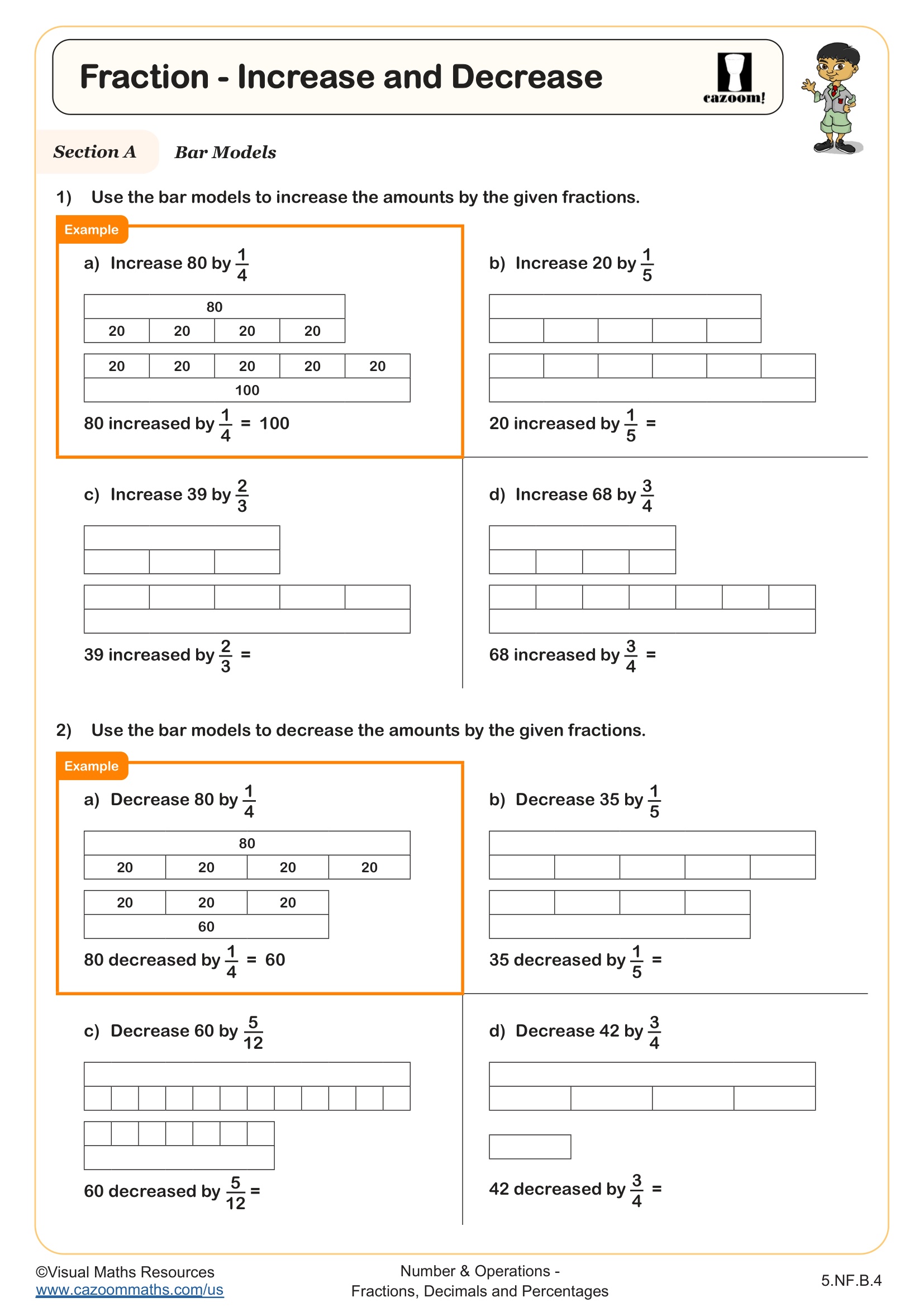
Money Problems (B)
Grades: 5th Grade, 6th Grade
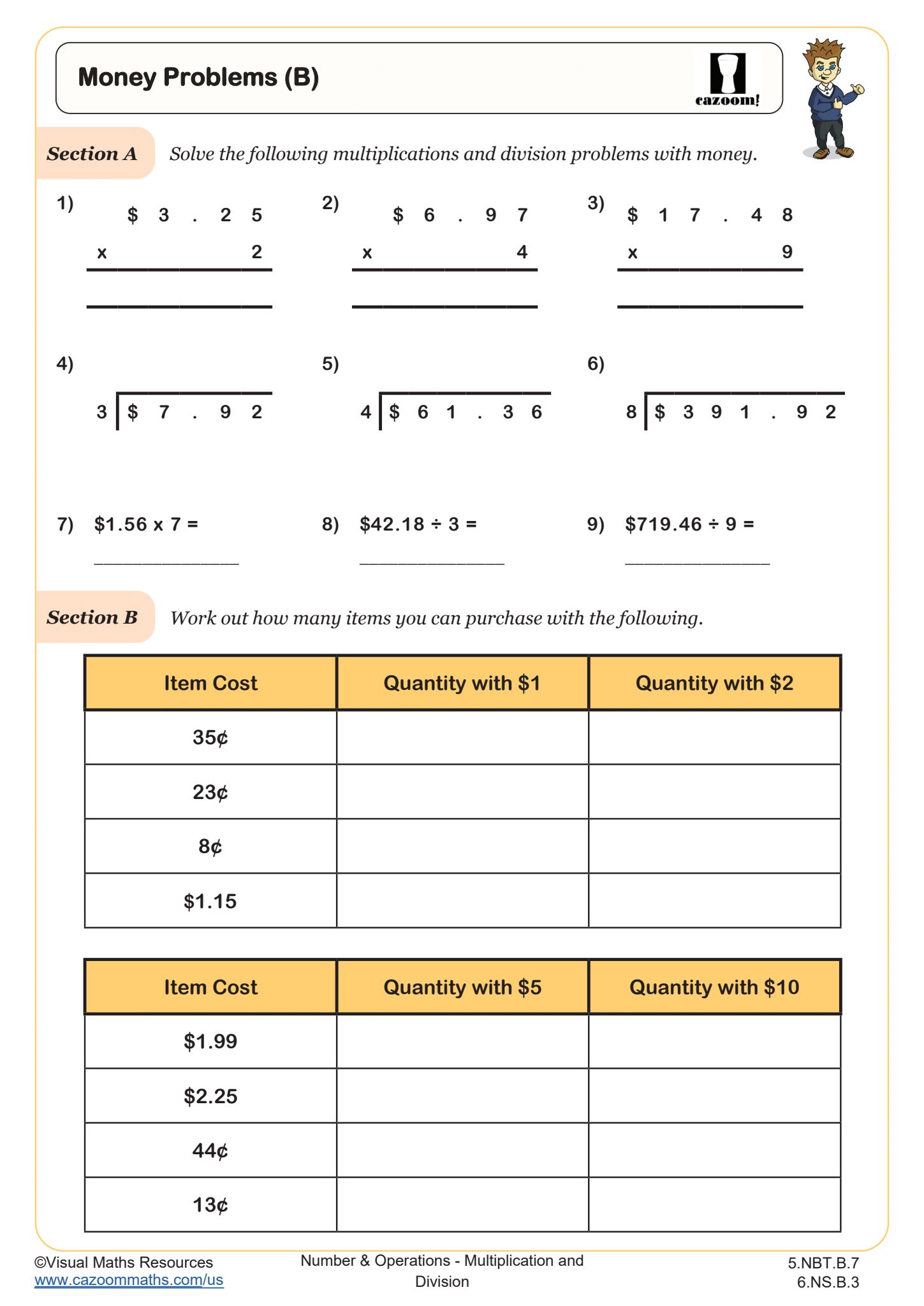
Multiplying and Dividing by 10, 100 and 1,000 Codebreaker
Grades: 5th Grade
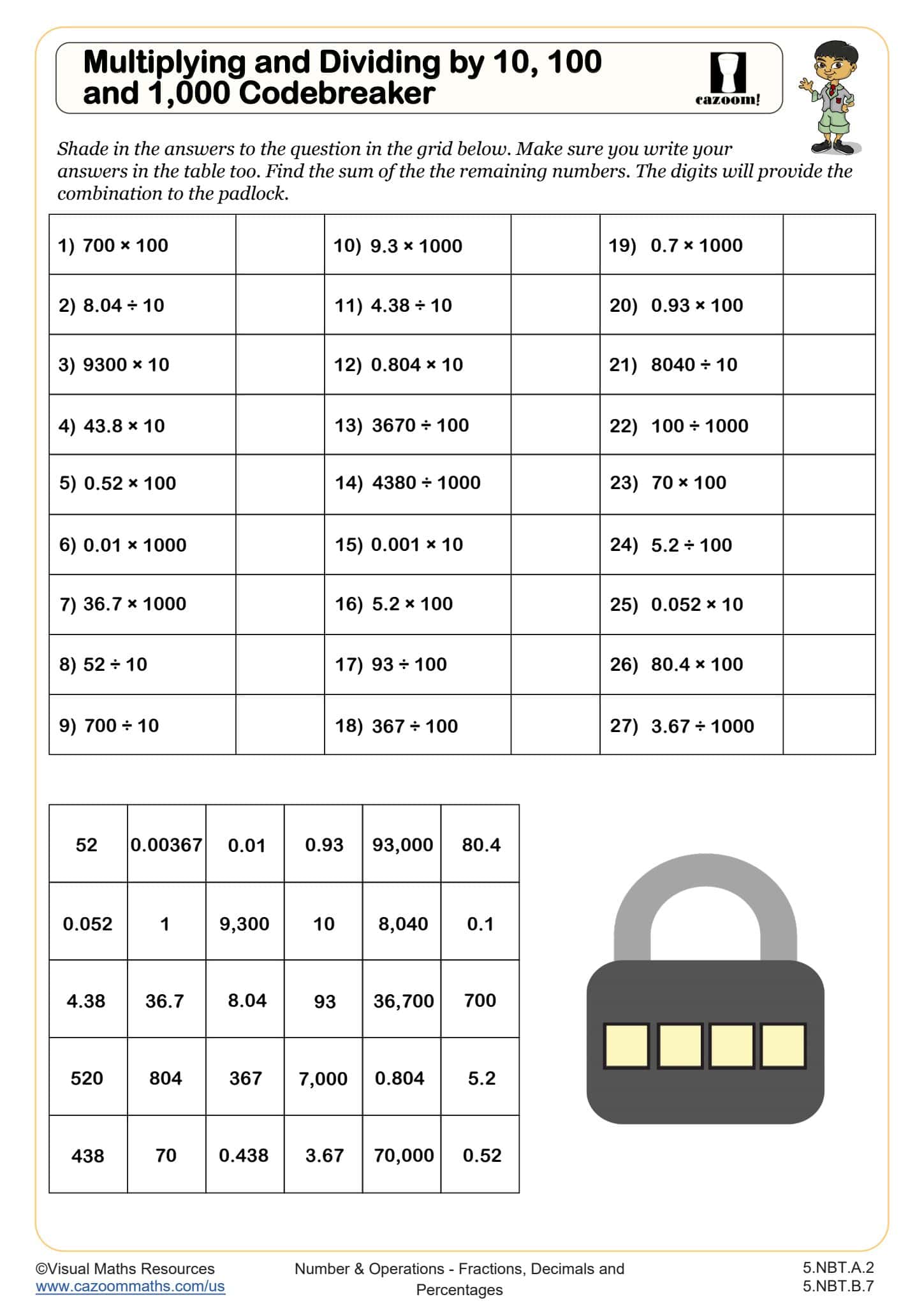
Partitioning Decimals - Tenths and Hundredths (A)
Grades: 5th Grade
-Questions-Worksheet.jpg?w=3840)
Partitioning Decimals - Tenths and Hundredths (B)
Grades: 5th Grade
-Questions-Worksheet.jpg?w=3840)
Converting Fractions, Decimals, and Percents (A)
Grades: 6th Grade
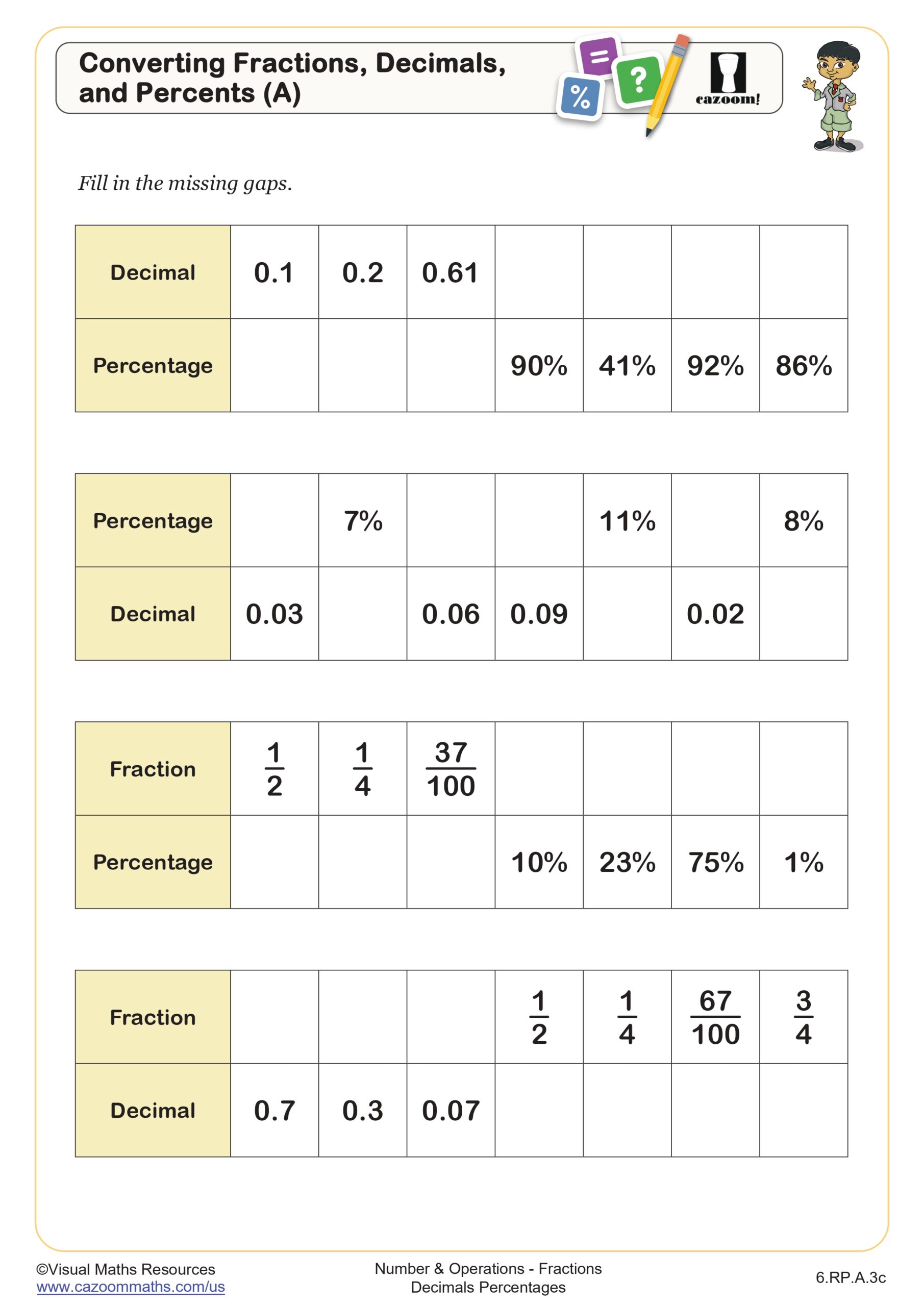
Converting Fractions, Decimals, and Percents (B)
Grades: 6th Grade
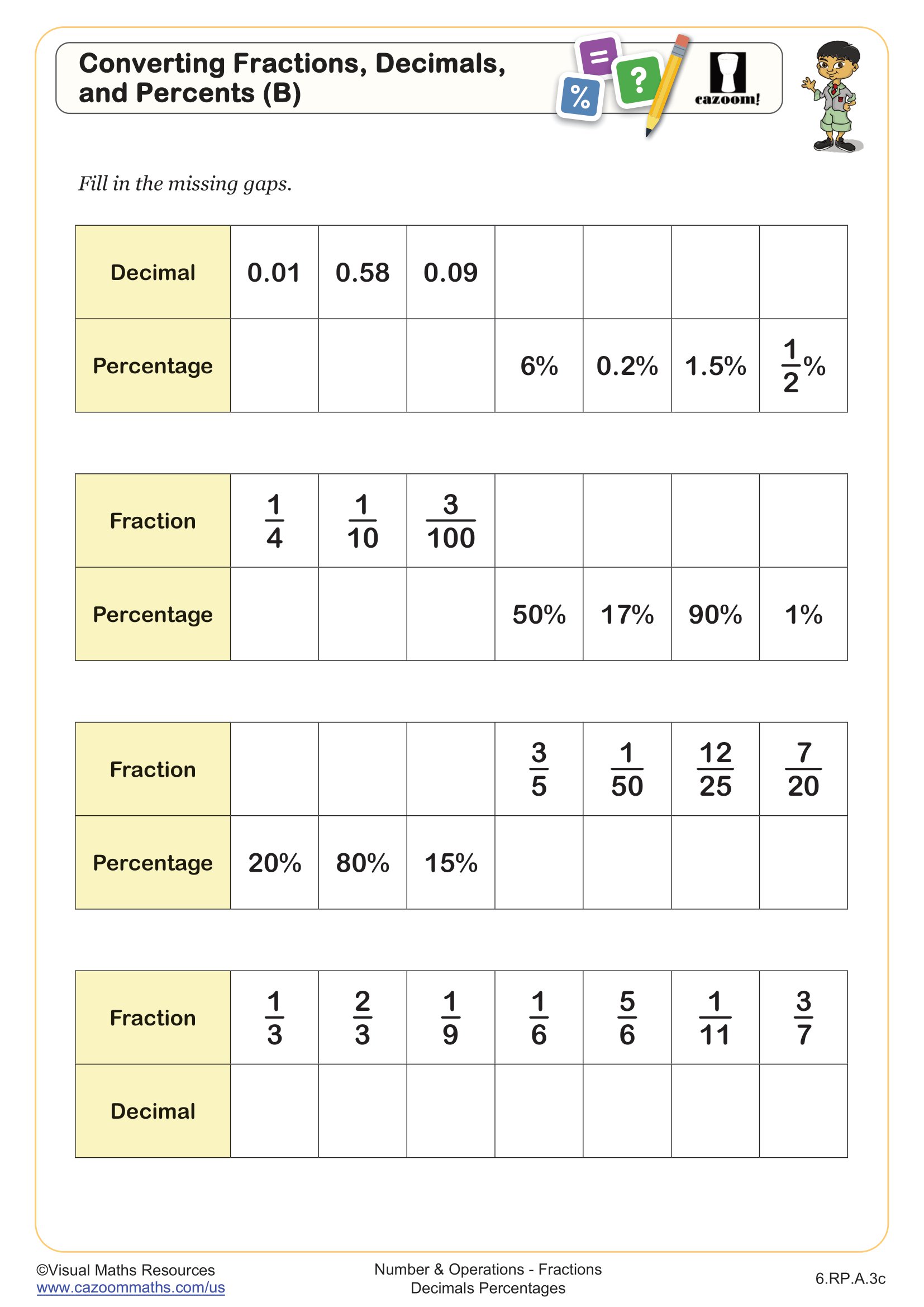
Converting Fractions, Decimals, and Percents (C)
Grades: 6th Grade, 8th Grade
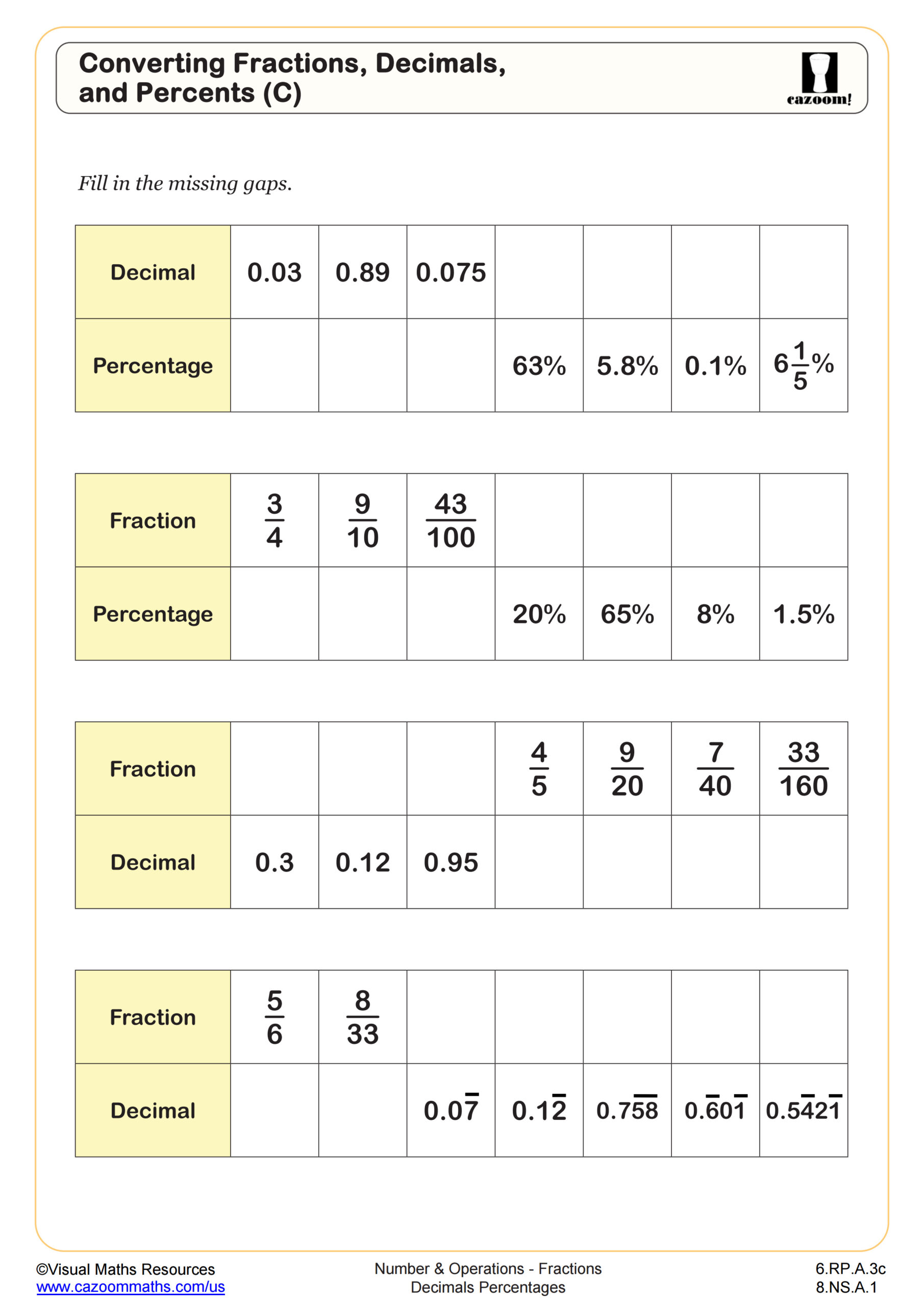
Dividing Mixed Numbers
Grades: 6th Grade, 7th Grade
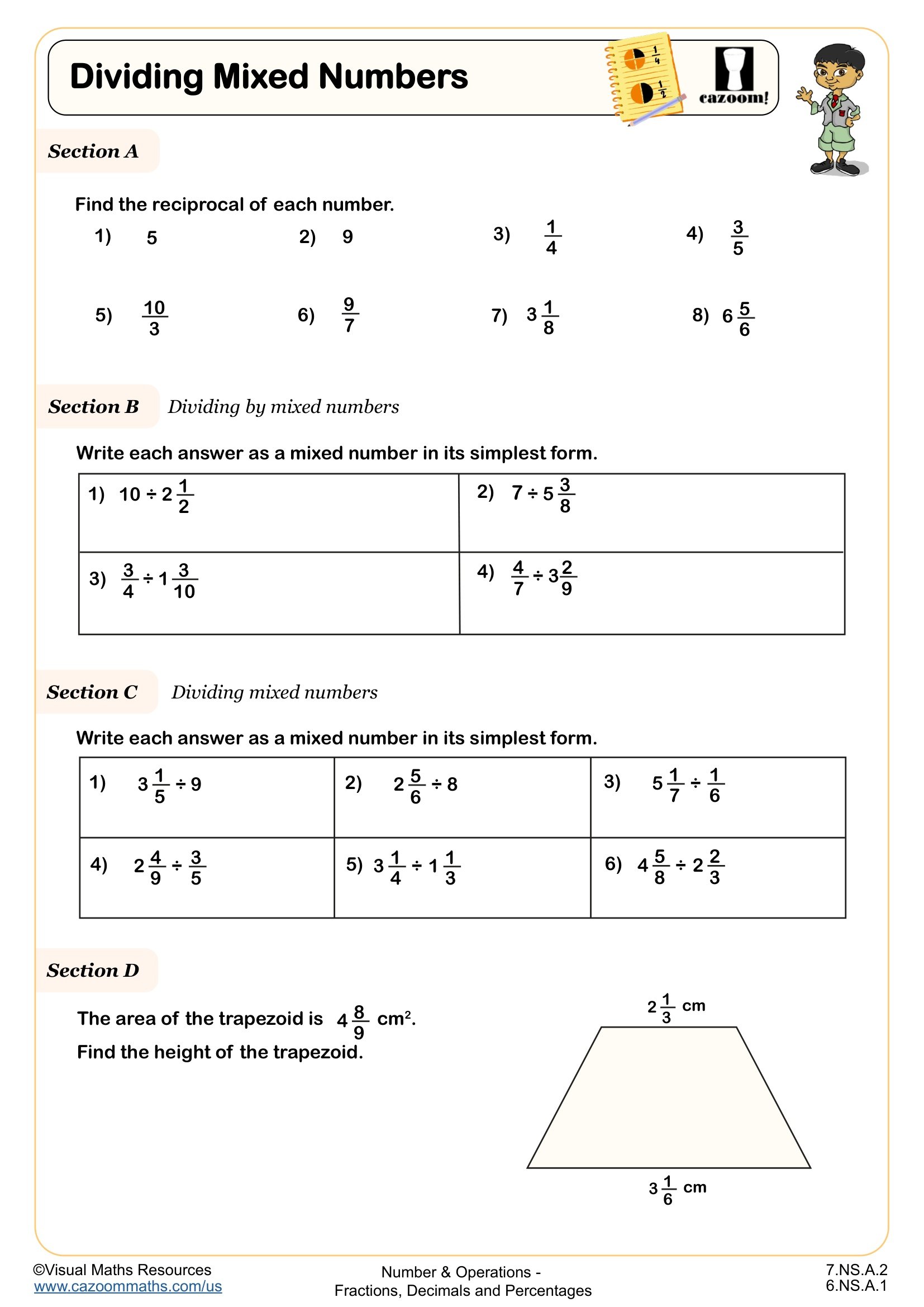
Finding Equivalent Fractions, Decimals, and Percents (A)
Grades: 6th Grade
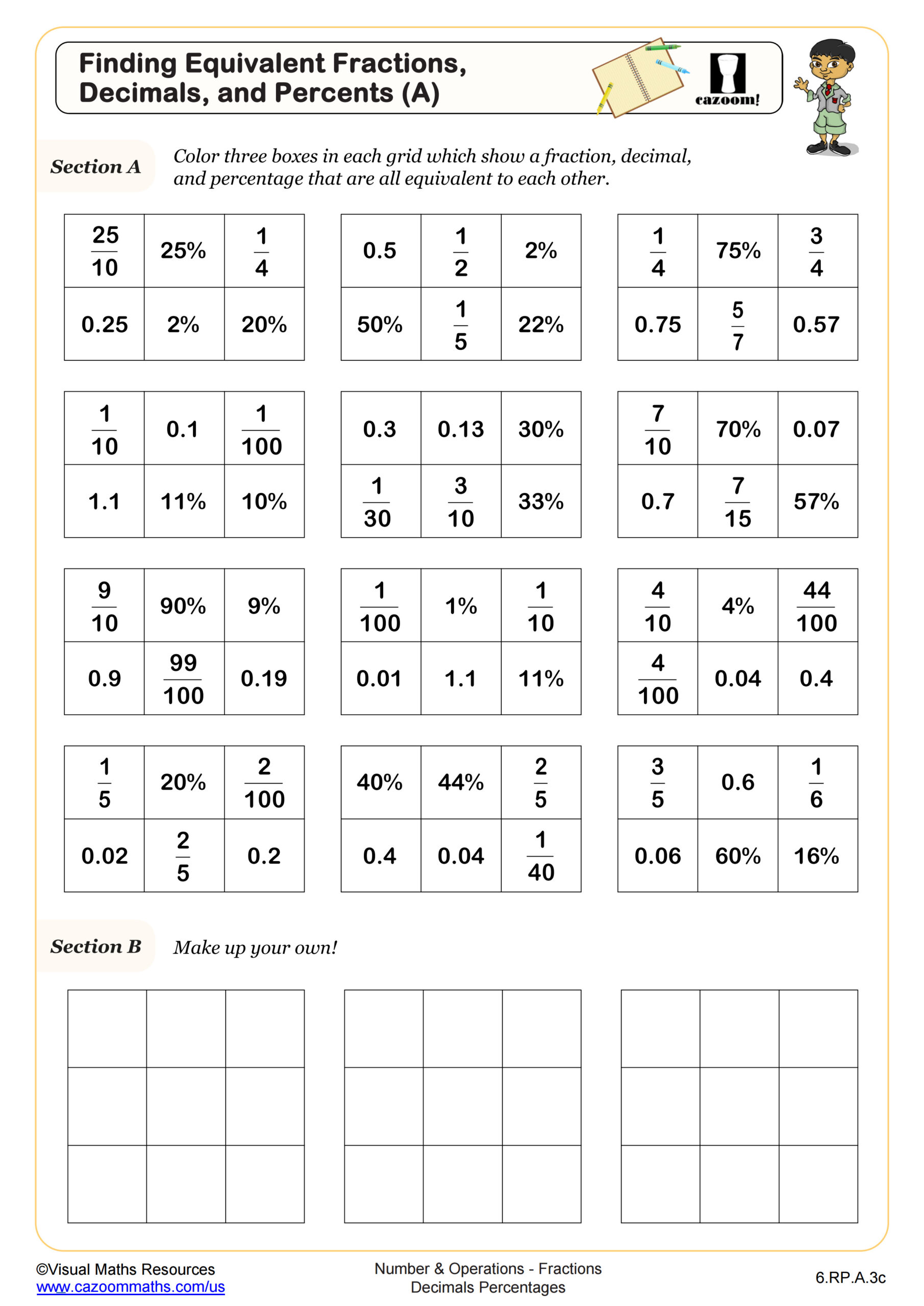
Finding Equivalent Fractions, Decimals, and Percents (B)
Grades: 6th Grade
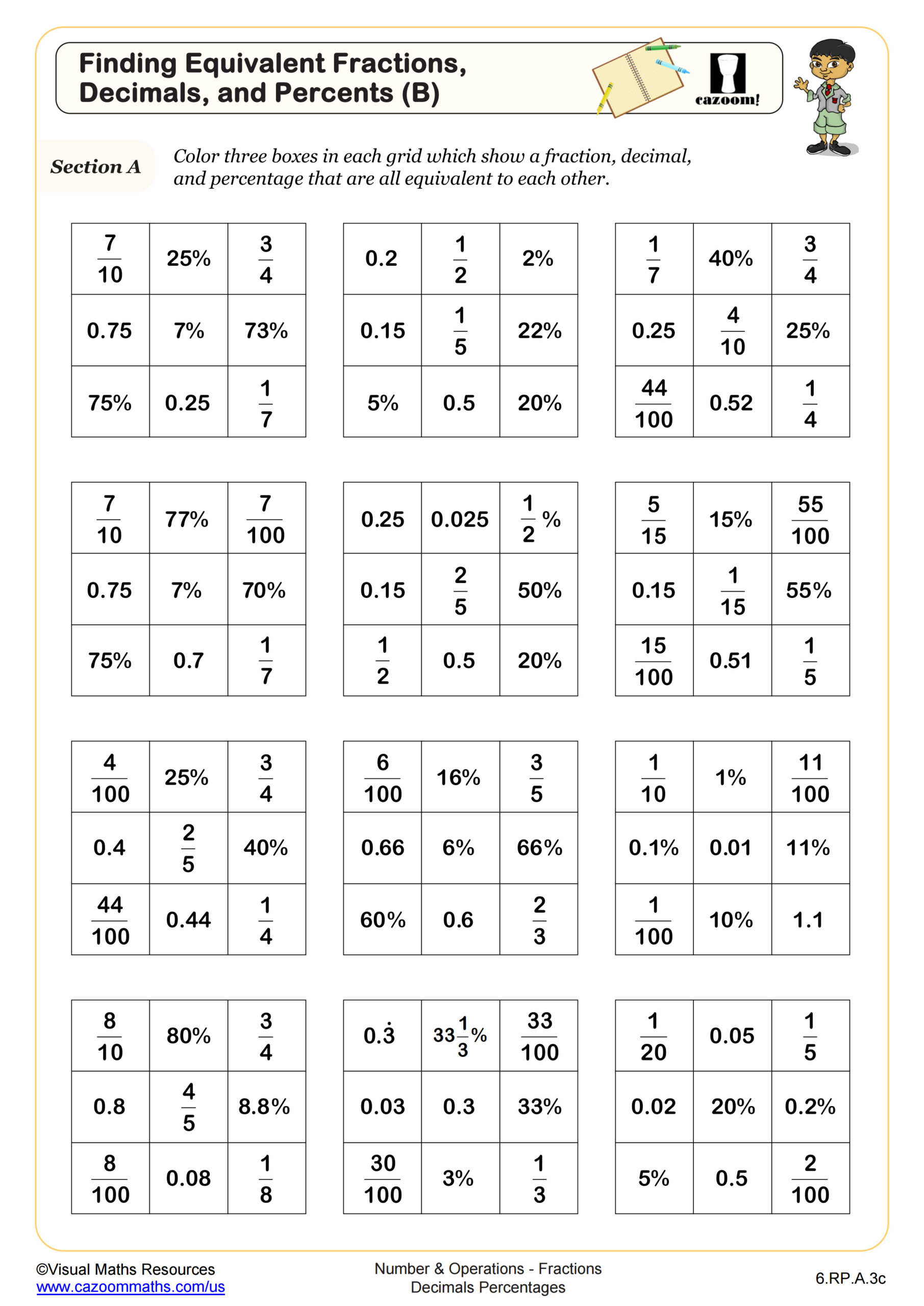
Fractions, Decimals, and Percents (A)
Grades: 6th Grade
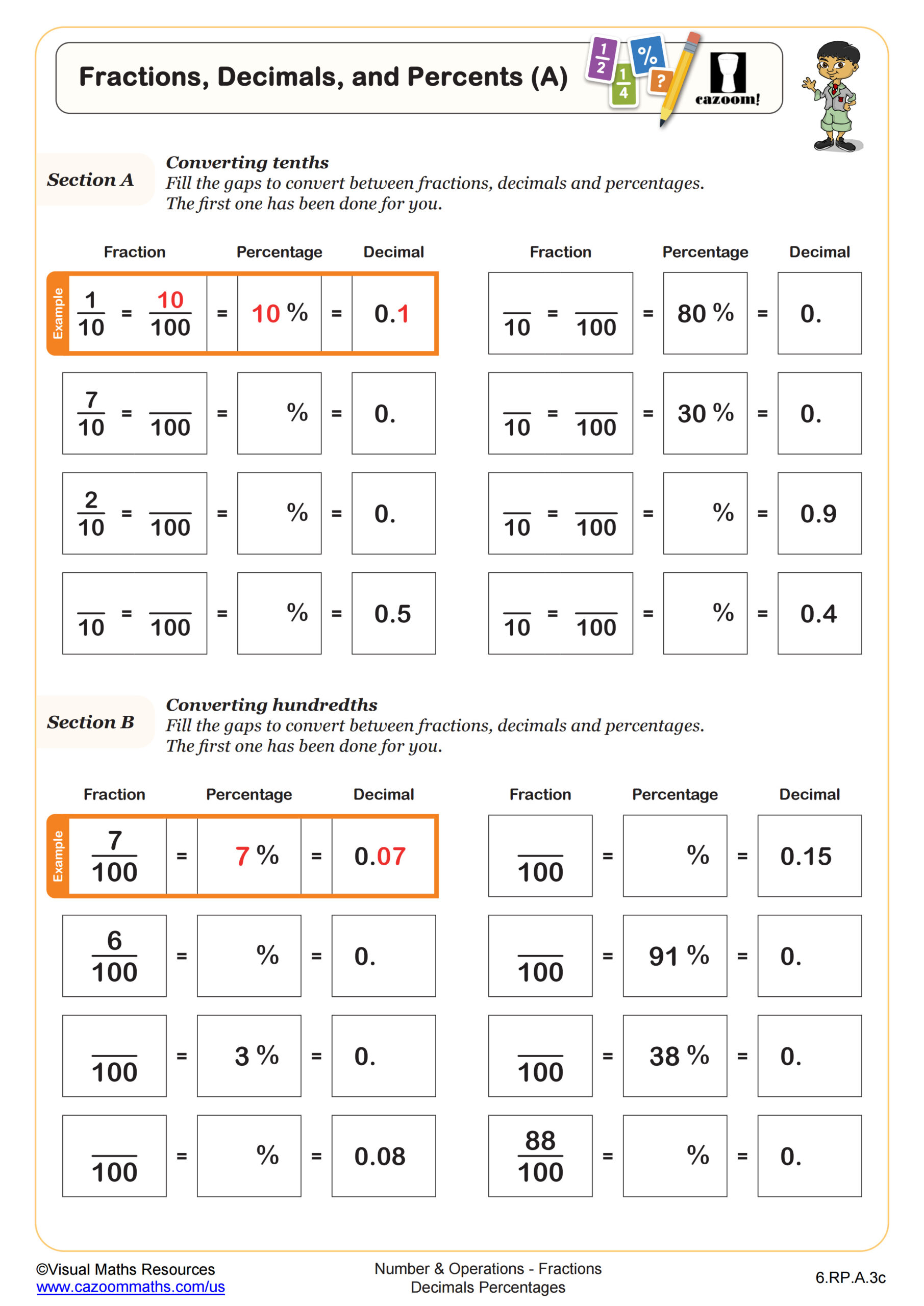
Fractions, Decimals, and Percents (B)
Grades: 6th Grade
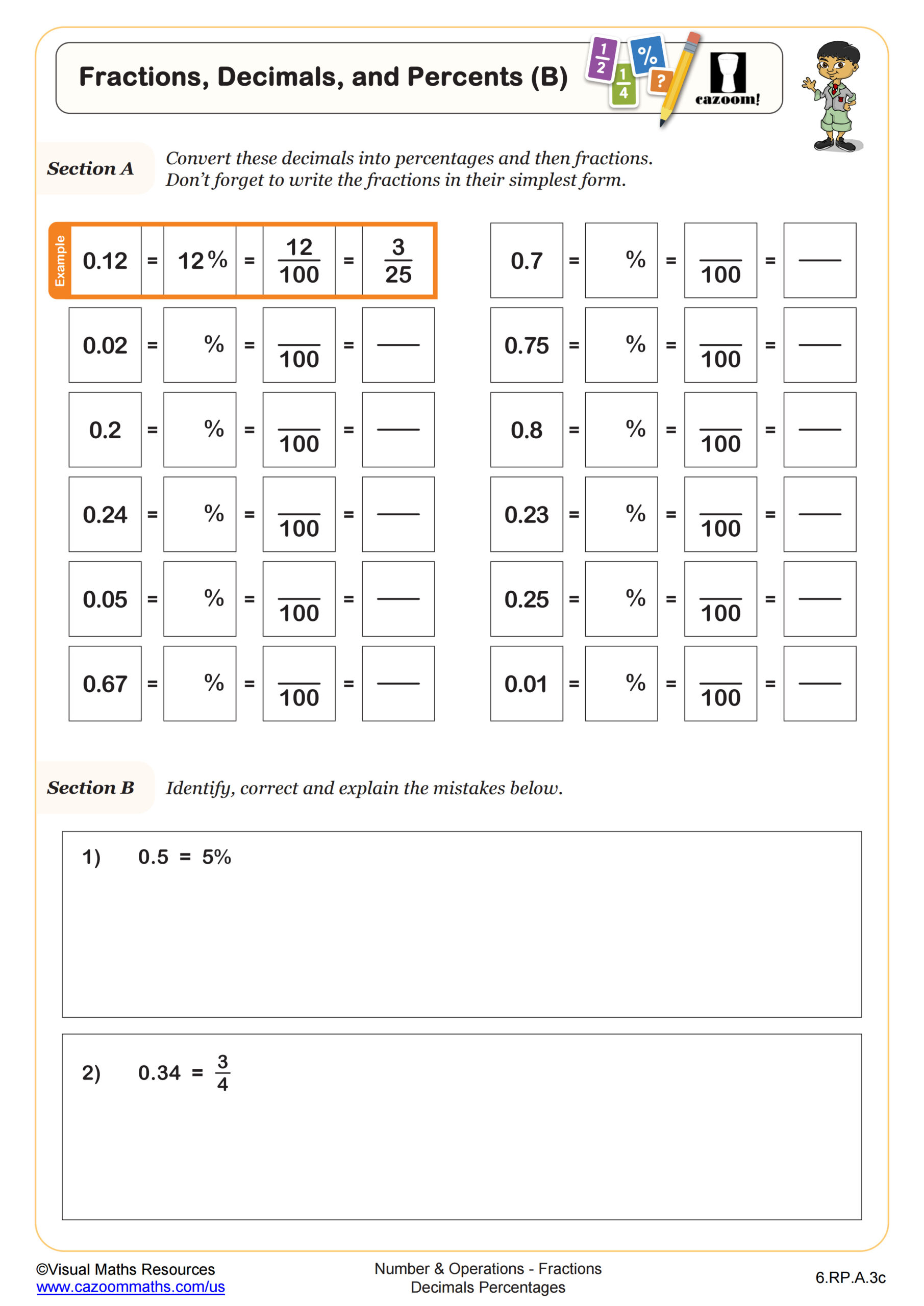
Fractions, Decimals, and Percents (C)
Grades: 6th Grade
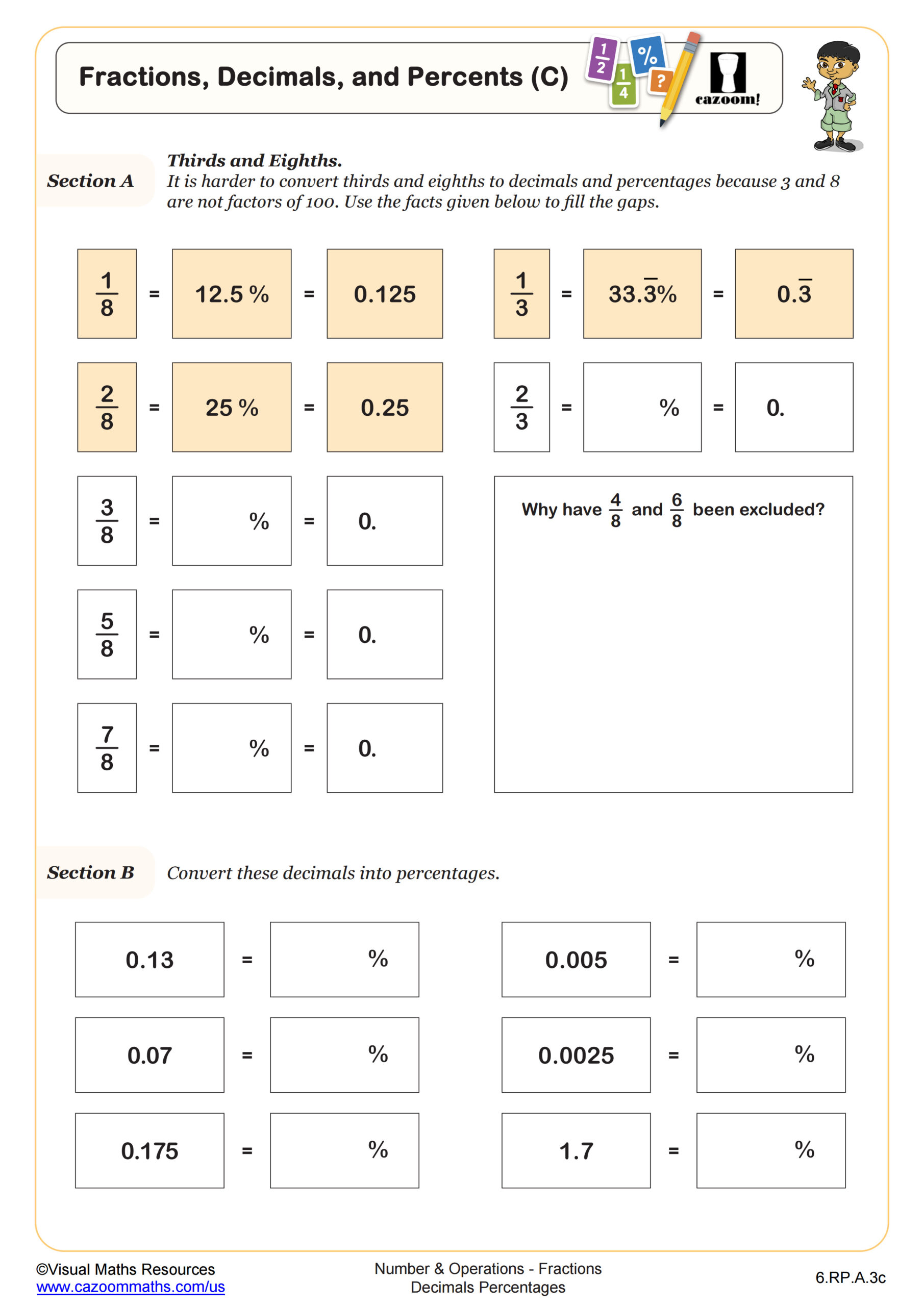
Fractions, Decimals, and Percents (D)
Grades: 6th Grade, 8th Grade
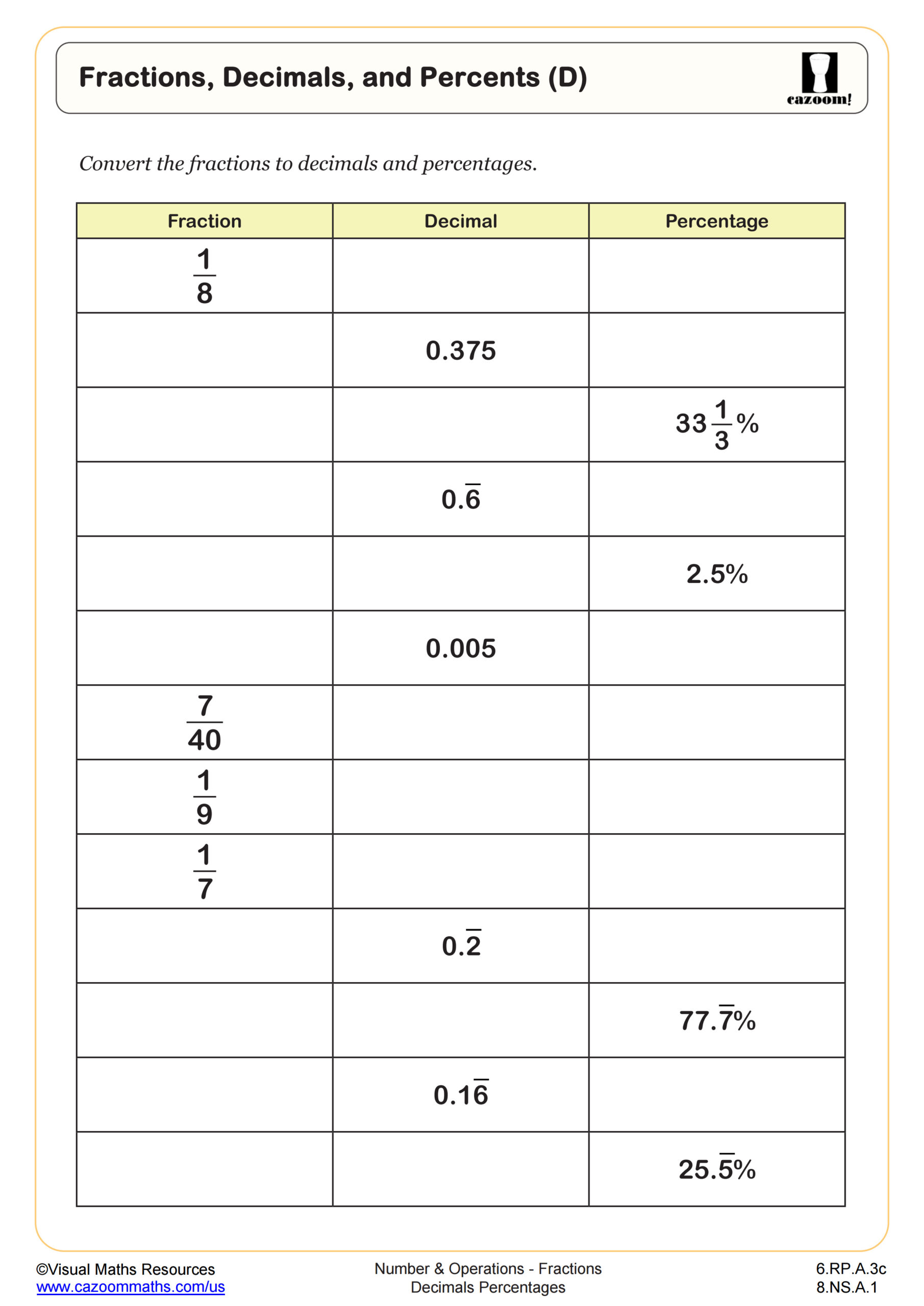
Fractions, Decimals, and Percents Word Problems
Grades: 6th Grade
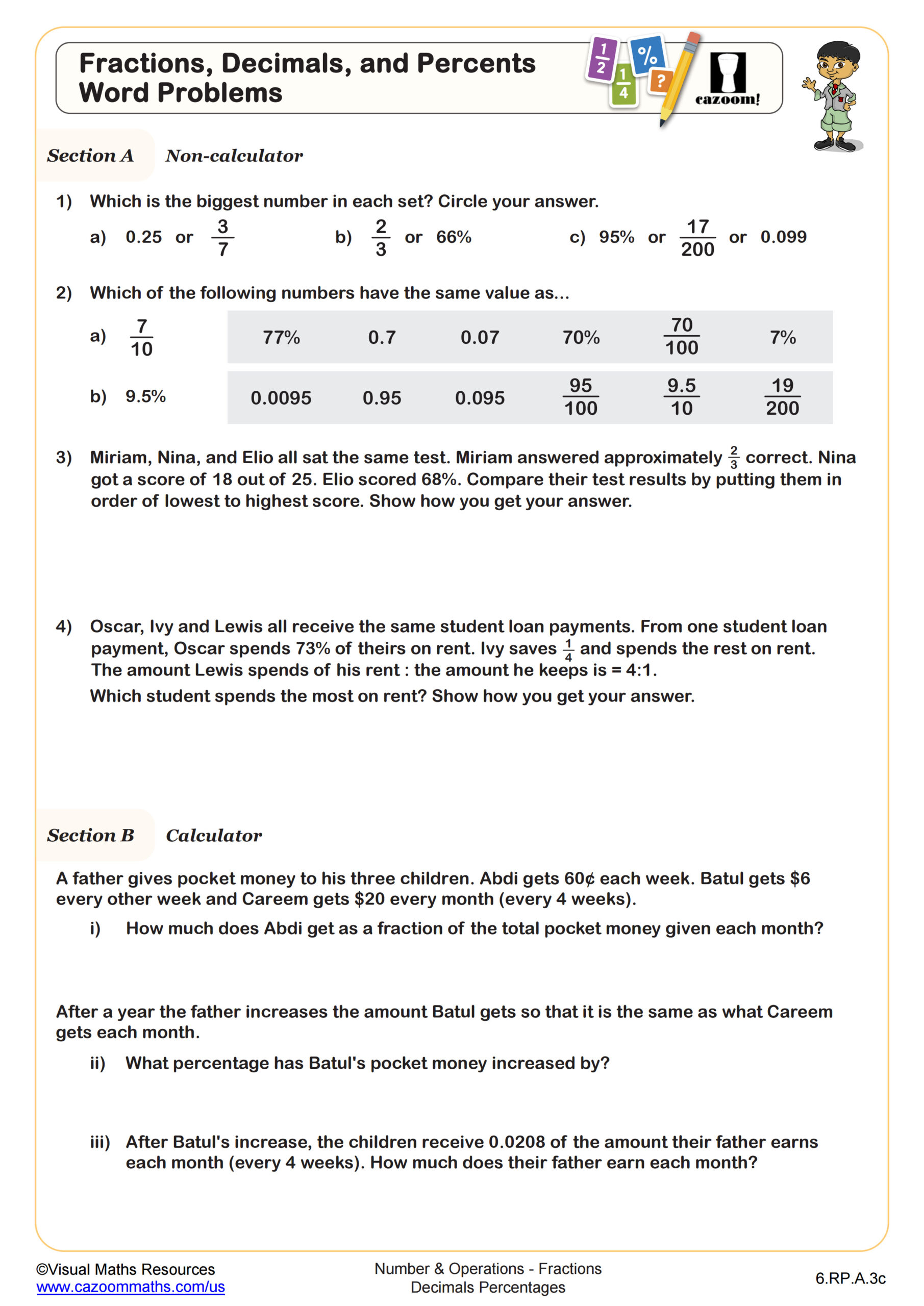
Ordering Fractions, Decimals, and Percents (A)
Grades: 6th Grade
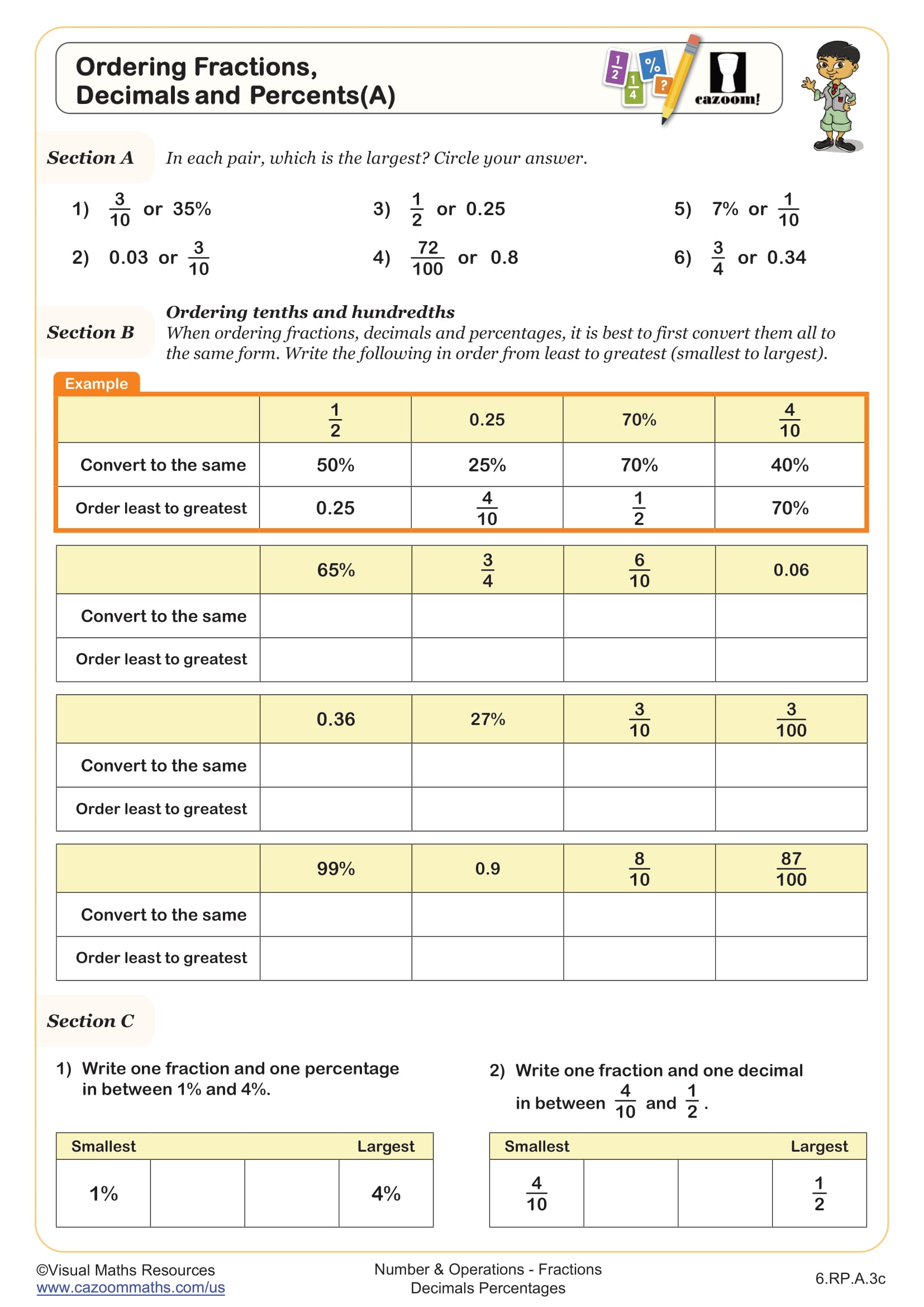
Ordering Fractions, Decimals, and Percents (B)
Grades: 6th Grade
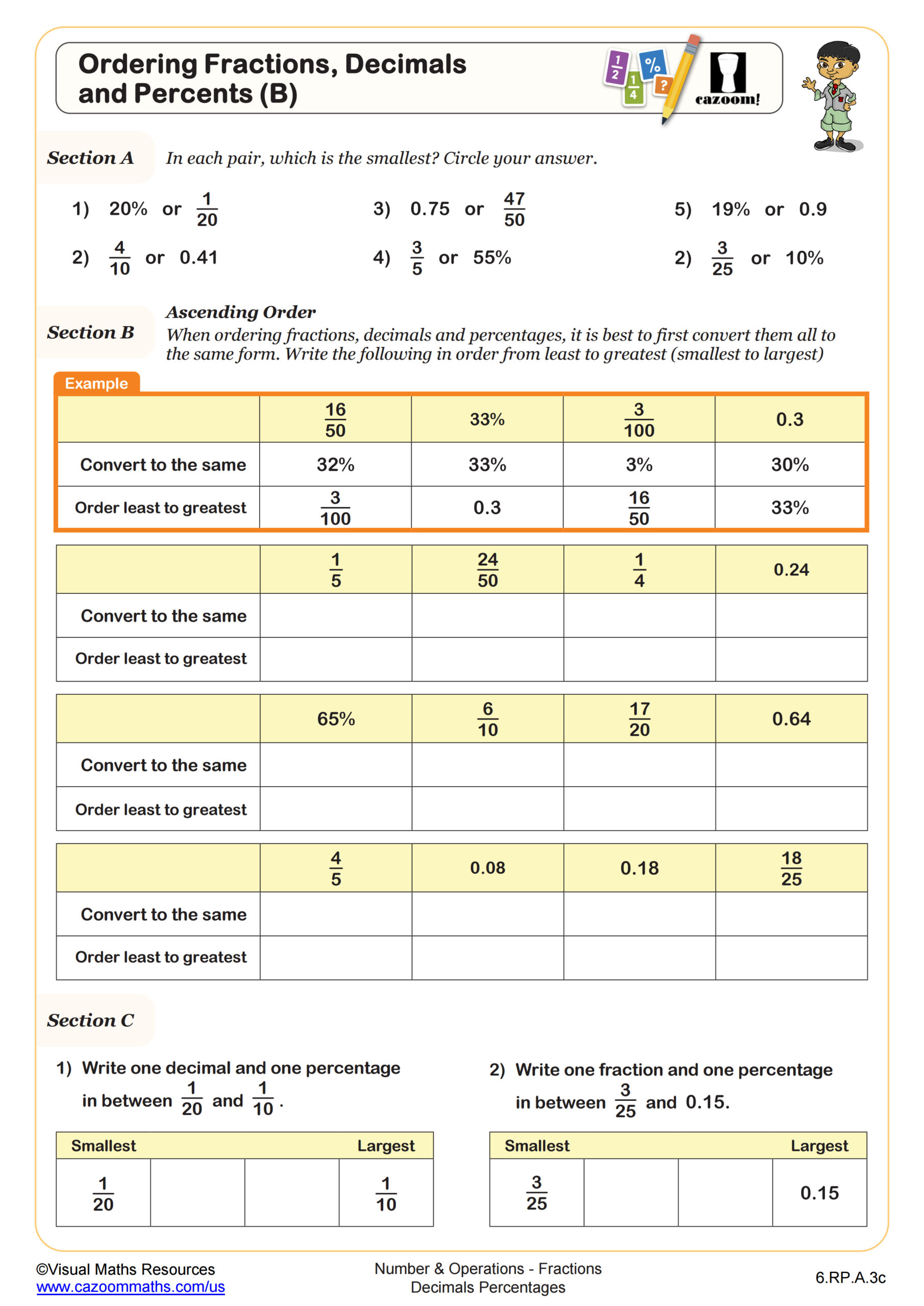
Searching for Equivalent Fractions, Decimals, and Percents (A)
Grades: 6th Grade
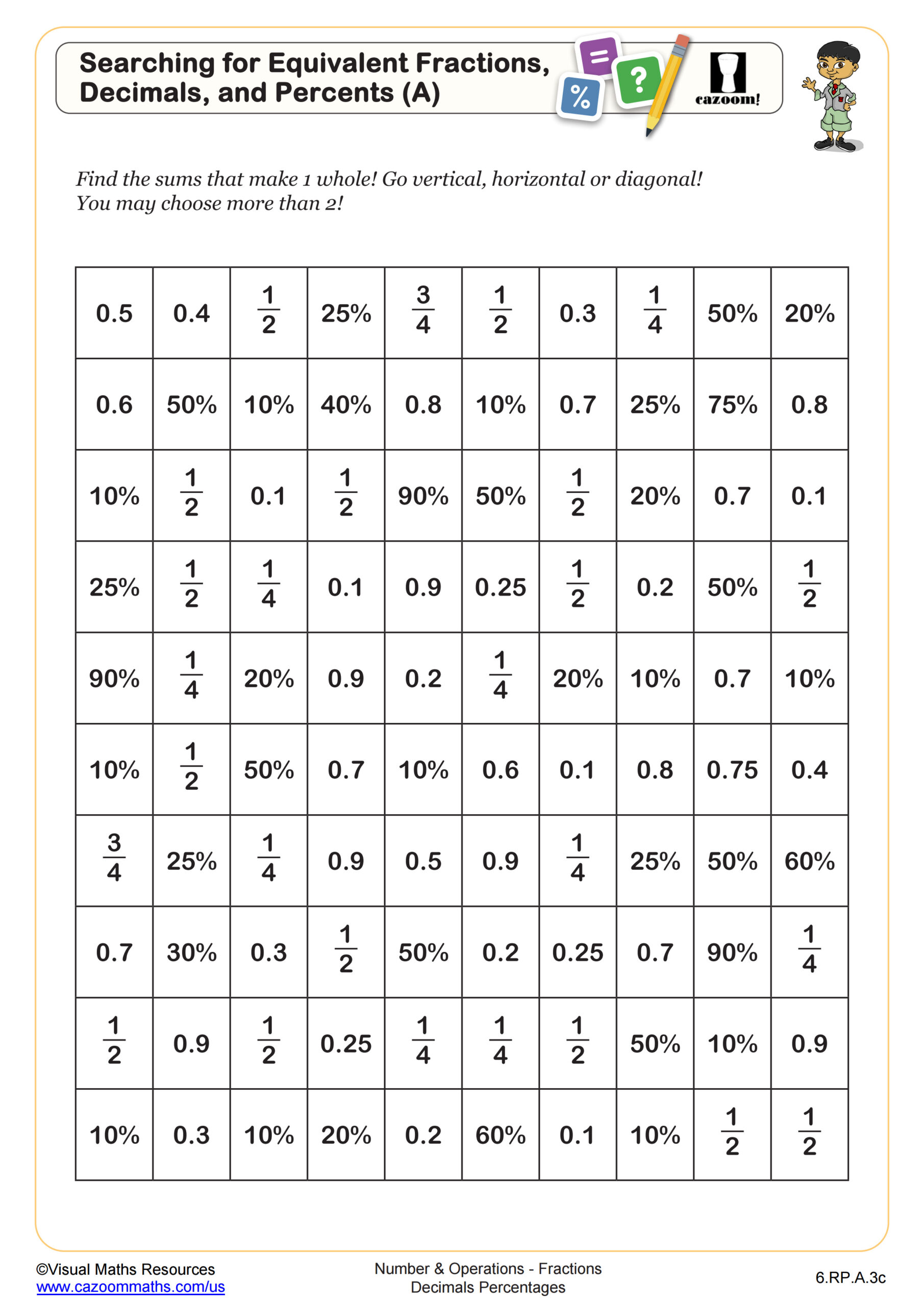
Searching for Equivalent Fractions, Decimals, and Percents (B)
Grades: 6th Grade
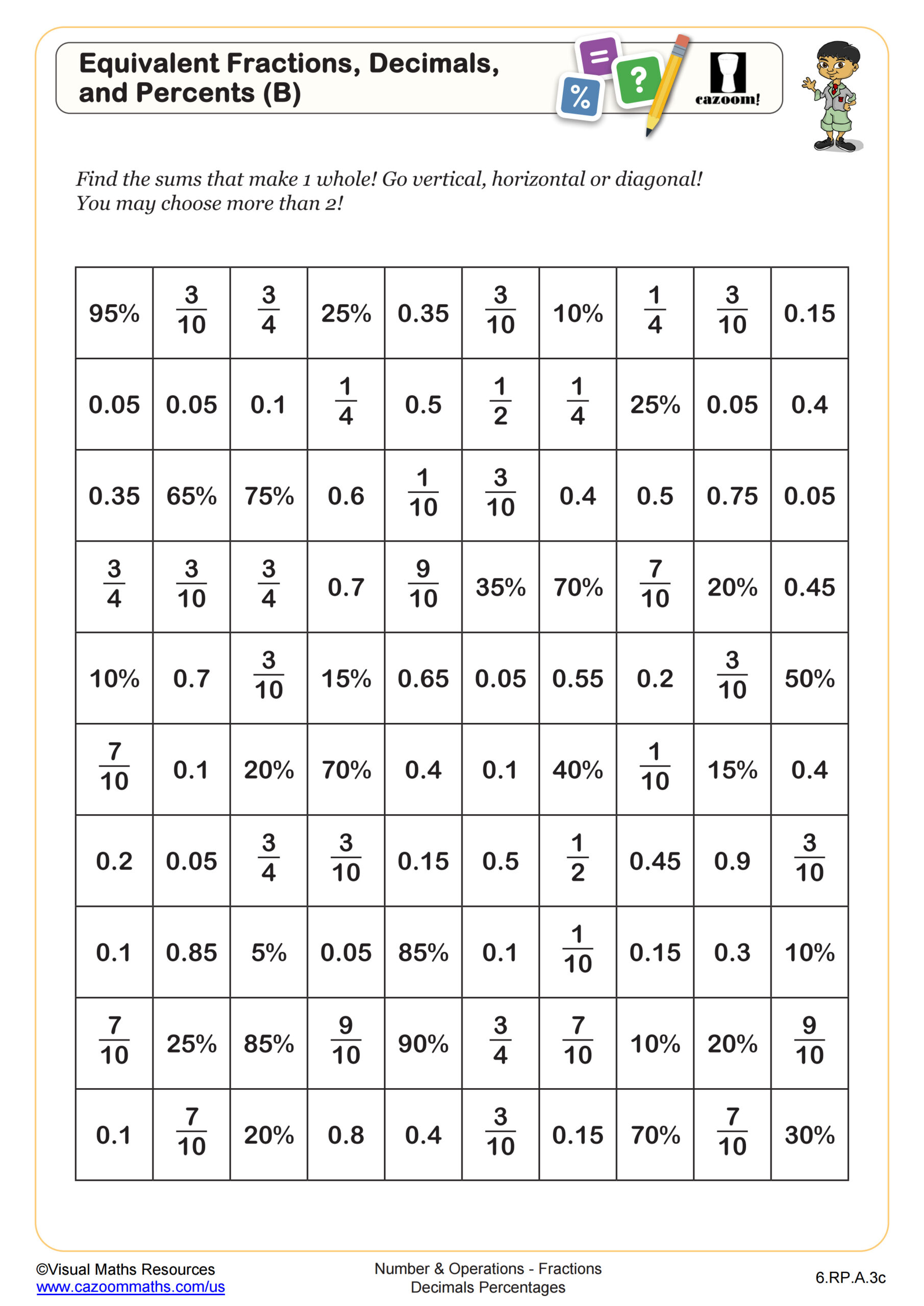
Searching for Equivalent Fractions, Decimals, and Percents (C)
Grades: 6th Grade
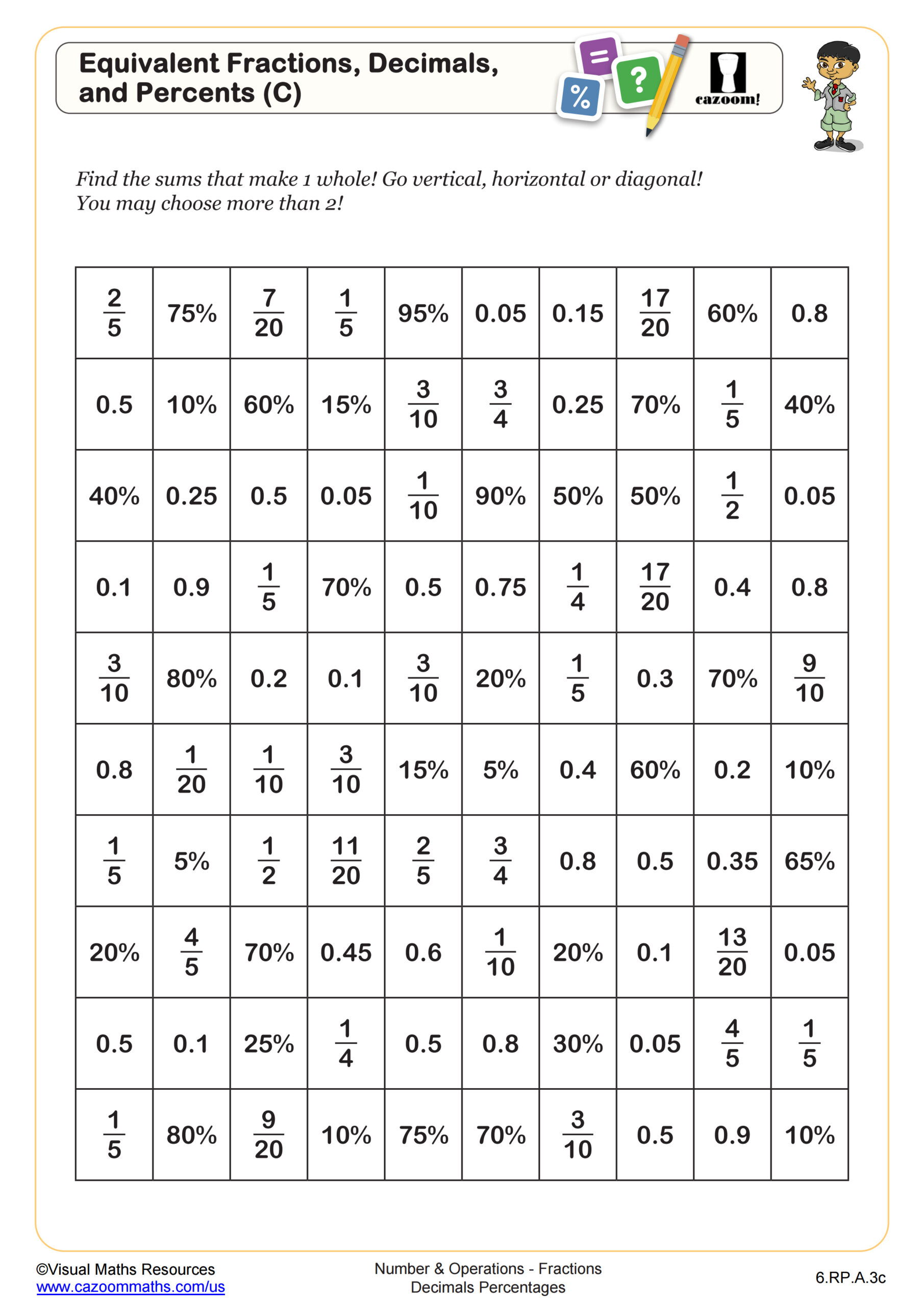
Calculating with Recurring Decimals
Grades: 8th Grade
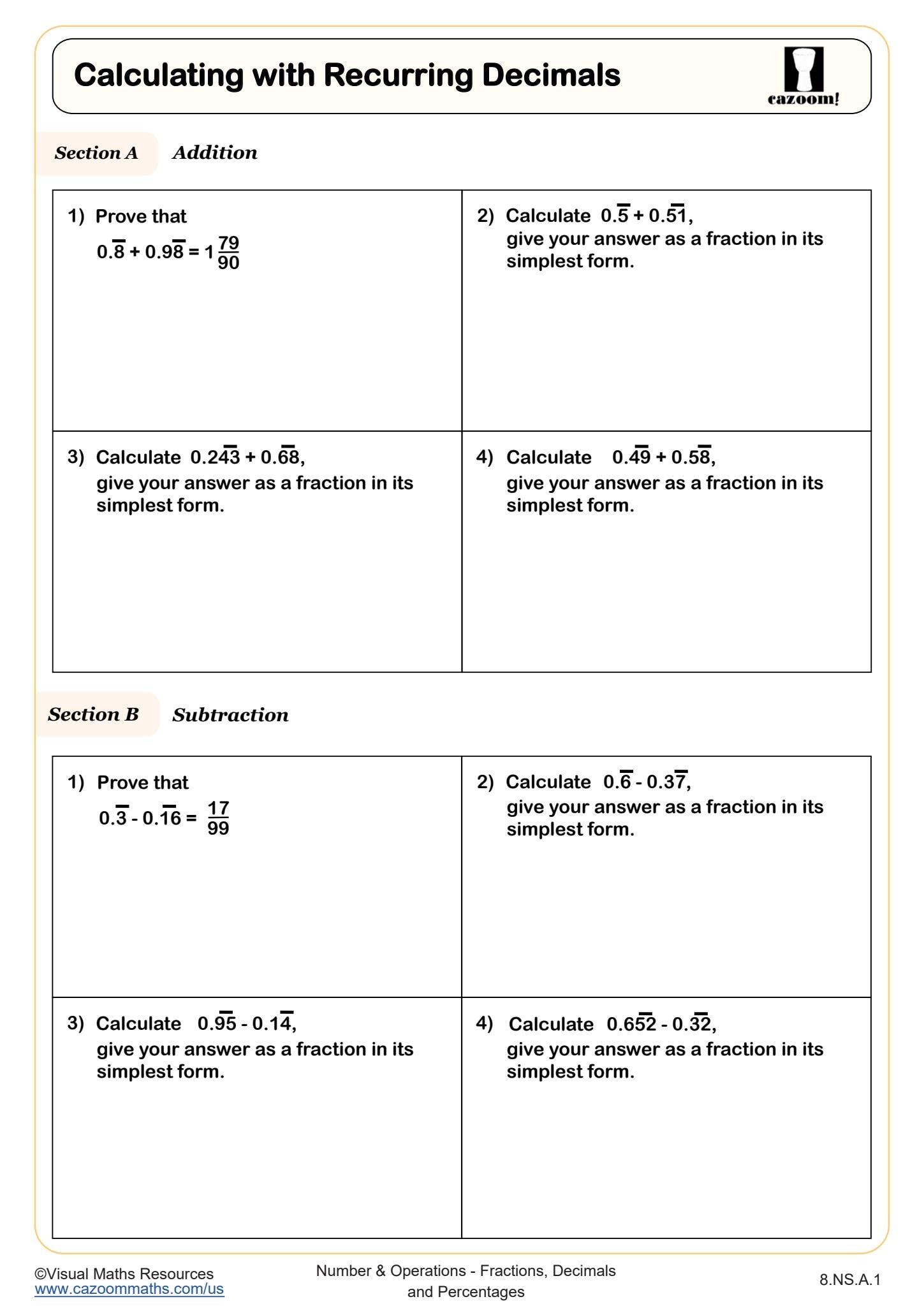
Converting Repeating Decimals to Fractions
Grades: 8th Grade
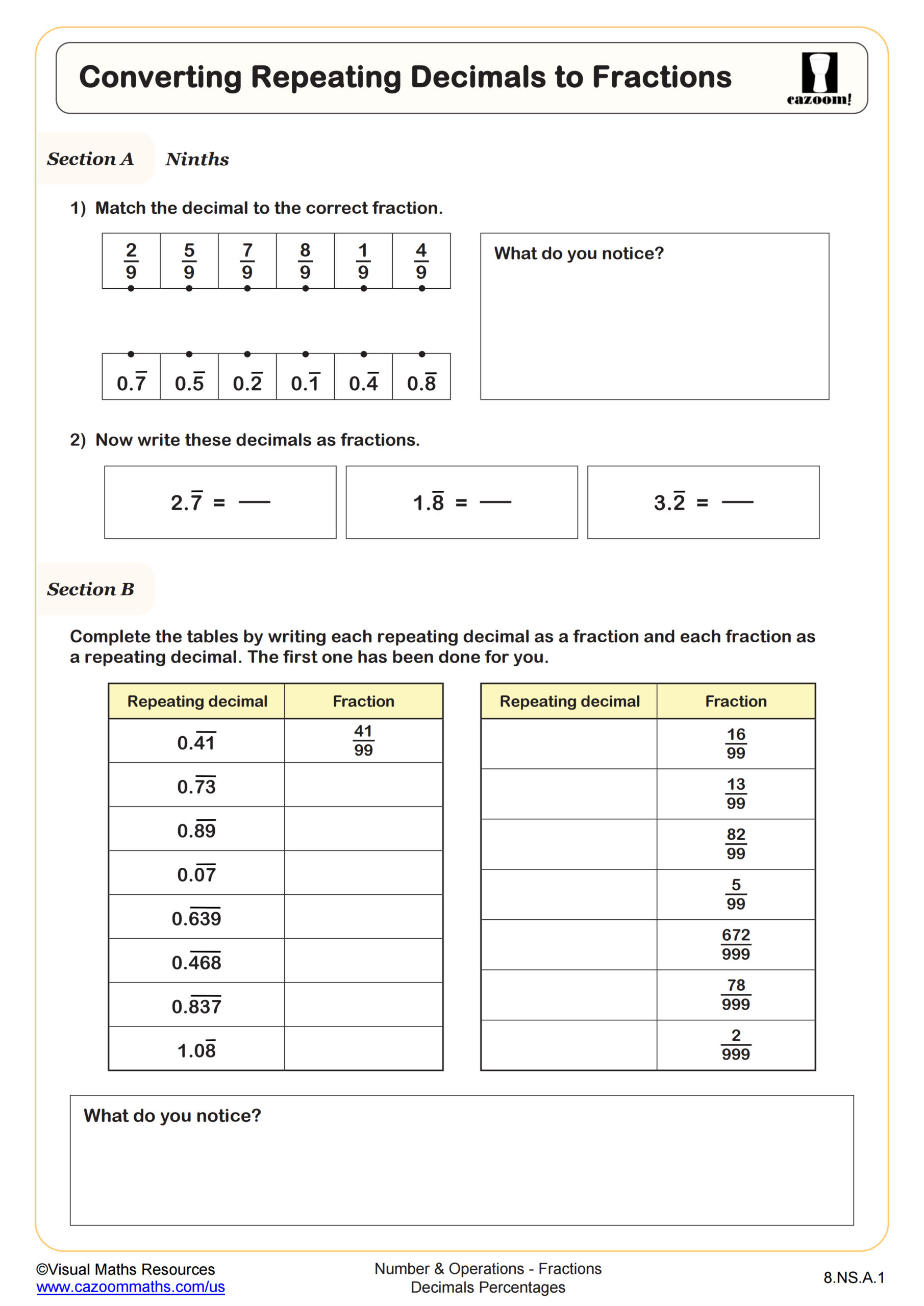
Converting Repeating Decimals to Fractions Using Algebraic Method
Grades: 8th Grade
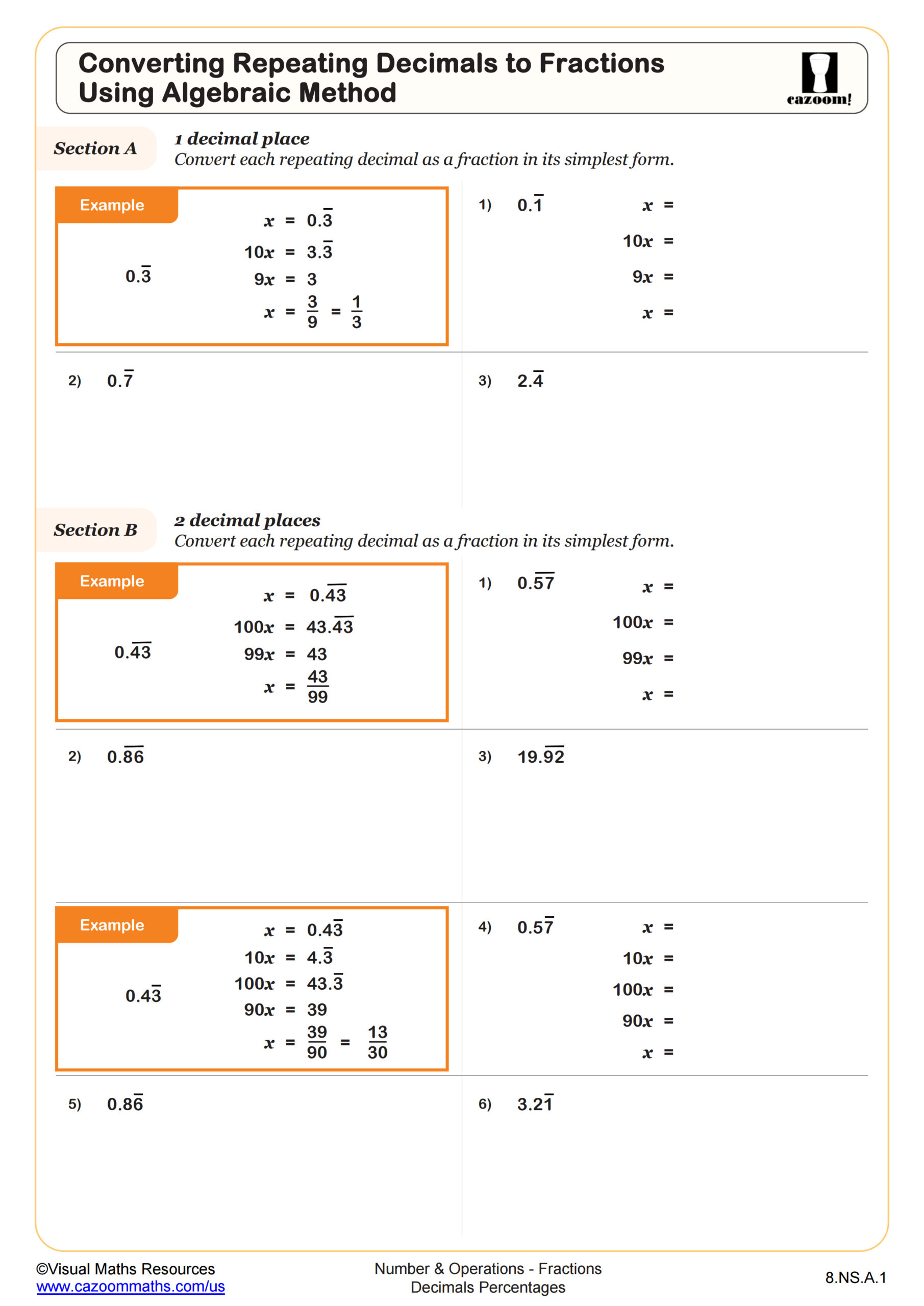
Worksheets on Converting Fractions, Decimals and Percentages
We have worksheets available to help students at all levels convert numbers between fractions, decimals and percentages. Whether they need help finding equivalent terms, or using recurring decimals, our resources will ensure your child or pupil is confident on all aspects of fractions, decimals and percentages. We have fun activities available to download to help teach children this important information in an enjoyable and engaging way, and plenty of questions to test their knowledge.
The Real Life Applications of Fractions, Decimals and Percentages
Fractions, decimals and percentages have many applications in our everyday lives.
Data and statistics are often presented as a fraction or percentage in news articles to make the results of research more concise and easy to understand. In order to get a sense of what the statistic actually means, we will draw upon the knowledge of fractions, decimals and percentages we learned in school.
Everyday Application of Decimals
This is not the only example where it will be useful to know about fractions, decimals, percentages in real life.
Amounts of money are always represented in decimal form, and when measuring ingredients for a recipe, amounts are sometimes represented in fraction form. There are also situations in which we need to know how to convert an amount between a fraction, a decimal and a percentage. For example, if a recipe asks you to use 2.5ml of oil, but you do not have a utensil to measure such precise amounts, you know that 2.5mls is equivalent to half a teaspoon.
Teaching Decimals, Fractions and Percentages
Using fractions, decimals and percentages and recognizing equivalence between them is an important skill that has many applications in real life.
Fractions, decimals and percentages worksheets can help students become confident in this area of math. Worksheets that include worded questions and real-life examples are particularly useful for teaching children about the relevance of this topic.